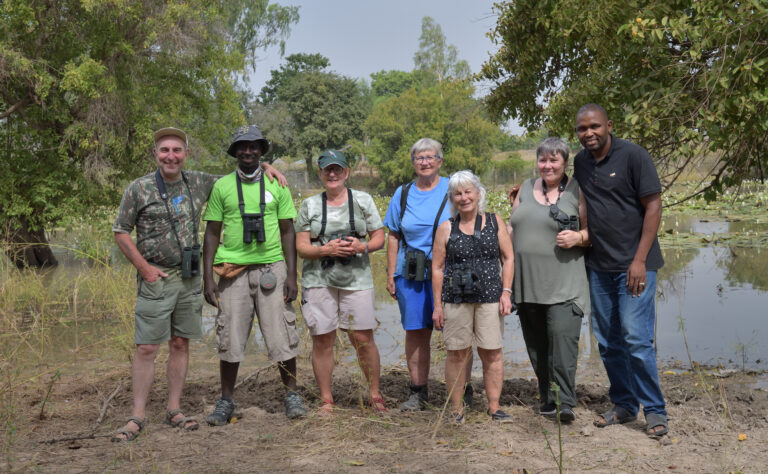
We exchange a dreary damp ‘Blighty’ for a warm West African welcome in The Gambia where the first bird on our trip list is a Levaillant’s Cuckoo in our guesthouse garden. Heading north from Tanji along the coast, we spot Grey-headed Gulls and Pied Crows on the way to the Abuko Nature Reserve where we soon meet Vervet Green and Red Colobus Monkeys just inside the entrance. Early sightings along the nature trail include a pair of African Jacanas with two small chicks, a Squacco Heron and a Sun Squirrel. Arriving at the Crocodile Pool, home to a small but perfectly formed Nile Crocodile, the surrounding trees produce plenty of Western Grey Plantain-eaters as well as Red-eyed and Mourning Doves, Common Bulbul, Long-tailed Glossy Starling, a calling African Grey Hornbill, a posing Broad-billed Roller and two Senegal Coucals sitting side by side with bright red gleaming eyes. Moving on we find a singing Common Wattle-eye plus Red-bellied Paradise Flycatcher and Yellow-breasted Apalis. We also find a Vinaceous Dove on the path, looking like a pink-headed Collared Dove, followed by Beautiful Sunbird and an obliging Swallow-tailed Bee-eater, while several Fanti Saw-wings (glossy green swallows) fly back and forth above the treetops. As well as Yellow-billed Kites, the air is full of spiralling Hooded Vultures and in one tree right above the path, we count at least thirty more, all resting and preening. From a hide overlooking a small pool we get close views of Red-eyed and Laughing Doves, Blue-spotted and Black-billed Wood Doves, African Thrush and Snowy-crowned Robin Chat, plus tiny Bronze Mannikins and Red-billed Firefinches, all coming down to drink, while a hefty but wary Nile Monitor Lizard skulks in the background. On the way back to the reserve entrance we find a Palm-nut Vulture and a Blue-breasted Kingfisher with a stonking bill and then another visit to the Crocodile Pool adds Red-billed Hornbill and Violet Turaco to the bird list.

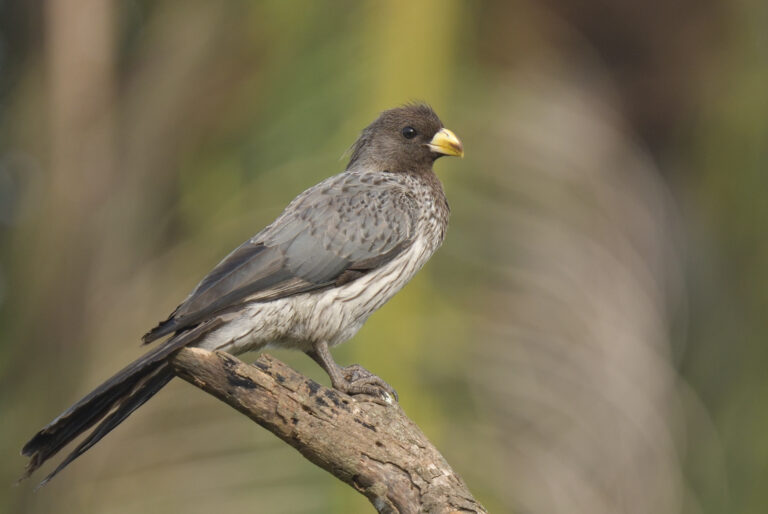
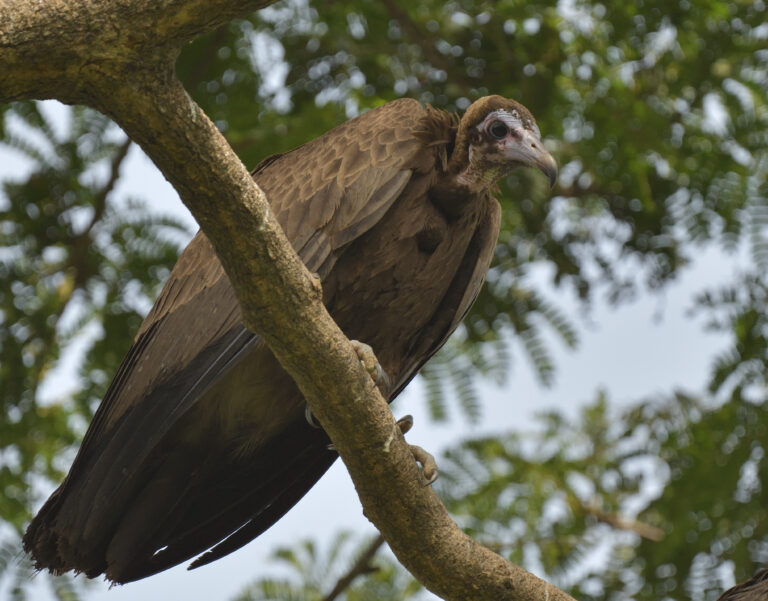
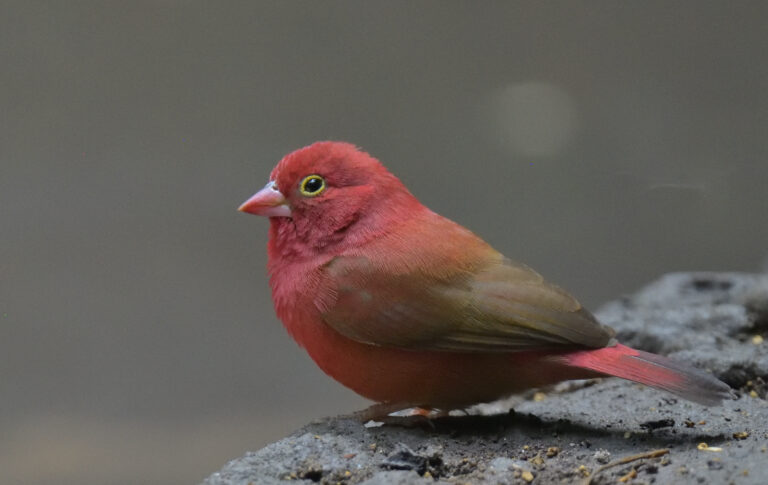
From Abuko it is a “fifteen to twenty minute drive to Lamin Lodge” but this didn’t allow for a twenty minute delay caused by an articulated lorry blocking the only access road to the lodge, as the driver repeatedly tries to reverse into a gateway which is obviously too narrow. After several failed attempts, the lorry simply dumps its load of stone in the gateway, and as it pours from the back of the truck, the growing heap spills across almost half the track. After some honking and shouting we eventually reach the lodge for a later than planned lunch beside a mangrove creek where the bare mud is crawling with claw-waving Fiddler Crabs and lively Mudskippers which don’t seem to realise they are supposed to be fish!
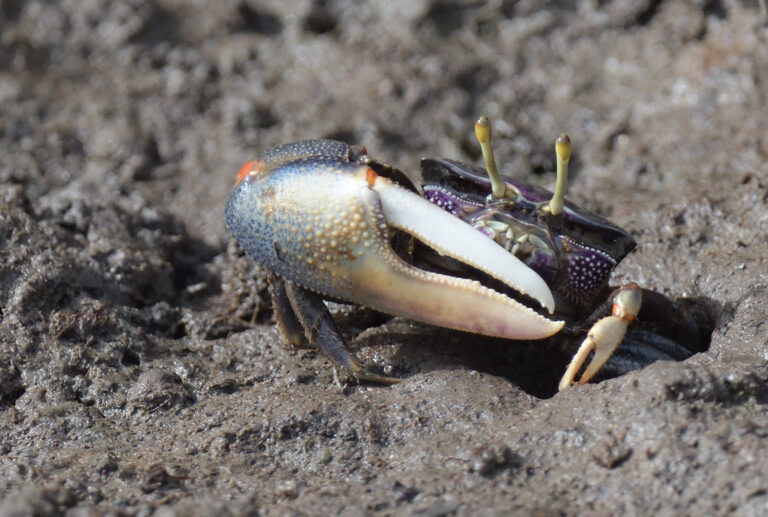
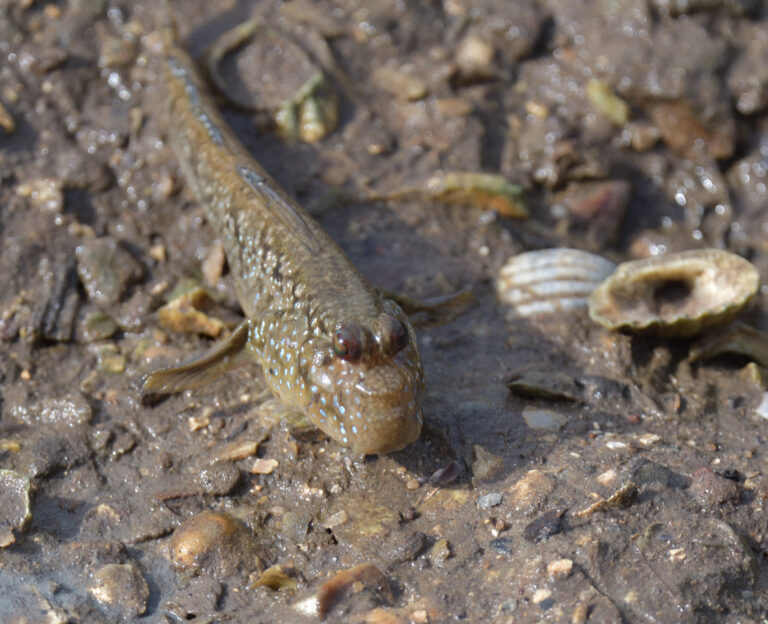
This afternoon, we visit the nearby Lamin rice fields where we soon spot a familiar Green Sandpiper, the unfamiliar Hamerkop and a party of exotic Green Woodhoopoes, with long chequered tails and curved bills used to probe for insects in the bark of tree trunks. Amid the waterlogged fields we also find Squacco, Striated and Western Reef Herons, Great White Egret, Long-tailed Cormorant, Wattled and Spur-winged Lapwings and Malachite, Pied, Woodland and Giant Kingfishers. Besides the waterbirds we also find Little and African Palm Swifts, Little Bee-eaters, Wire-tailed Swallows, Orange-cheeked Waxbills and a pair of very smart Blue-bellied Rollers.
Today we head ‘up river’ where the first stop is in the Farasutu Forest where birds along the access track include Cardinal Woodpecker, Yellow-fronted Tinkerbird, Tawny-flanked Prinia, Variable and “lovely” Splendid Sunbirds, Brown Babbler, Red-cheeked Cordon Bleu, Yellow-fronted Canary and a singing Willow Warbler! Once inside the forest we don’t get far thanks to the likes of Spotted Honeyguide, Grey-headed Bristlebill, Yellow-crowned Gonolek, Collared Sunbird, Black-necked Weaver, the vociferous Oriole Warbler and another Violet Turaco, while several Mottled Spinetails (large swifts) fly over the forest. In a small wetland on the edge of the forest, we find loads of Senegal Thick-knees and our local guide shows us a White-backed Night Heron on a nest overhanging the water. Back in the forest, we spot Lesser Honeyguide and Black-rumped Waxbill while a troop of Patas Monkeys passes by. Our guide now takes us along a track where we find a singing Olivaceous Warbler on the way to see a pair of roosting Greyish Eagle Owls. Moving on, we find Double-spurred Francolin and Abyssinian Roller while Lizard Buzzard and five Yellow-billed Storks fly over.
After a short drive, we arrive at Pirong-Bontu Forest, where a small pool attracts a variety of small birds like African Pygmy Kingfisher, Common Bulbul, Red-billed Firefinch, Northern Red Bishop and Orange-cheeked Waxbill. After a picnic lunch here, a walk in the forest produces African Pied Hornbill, African Green Pigeon and a Verreaux’s Eagle Owl, looking down at us from sleepy pink eyelids, while roosting so high in a large tree that getting it in the scope is a real challenge, whereas the White-faced Scops Owl by the reserve entrance is a far easier proposition. So, that’s three different owls in one day!
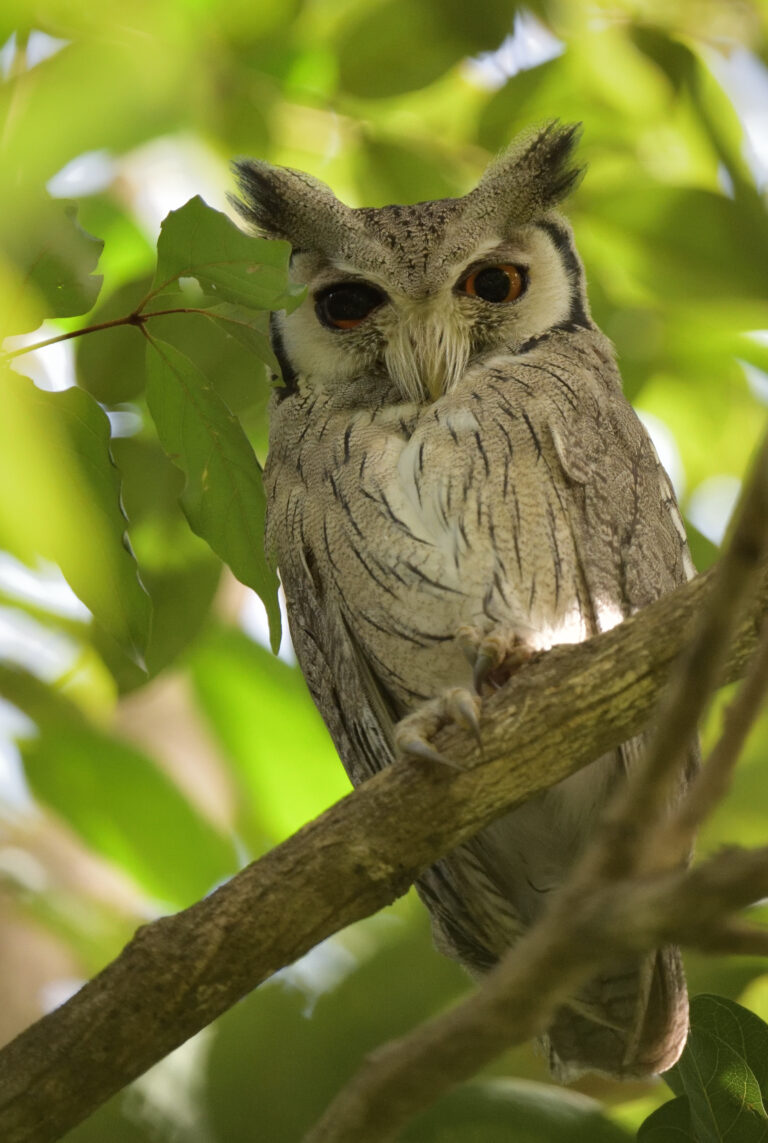
By late afternoon it’s time to continue our journey ‘up river’ to Tendaba Camp, with a brief roadside stop at Kampenti, where Bruce’s Green Pigeon, Long-tailed Glossy Starling and the spectacular and well named Bearded Barbet all show well in the scope.
This morning there are Red-rumped Swallows flying around outside the open dining area, looking towards the wide Gambia River. After breakfast we head for the nearby Kiang West National Park, along a narrow sandy track passing through the small village of Bateling which is really off the ‘beaten track’. Along the way we spot Helmeted Guineafowl, Grasshopper Buzzard, Lanner Falcon, Dark Chanting Goshawk, Striped Kingfisher and Yellow-fronted Canary, plus Vieillot’s Barbet and Greater Honeyguide in the same tree. In a huge Baobab tree, we find Grey-headed Sparrow and two Brown-necked Parrots, although the rest of the forest is surprisingly quiet. On our return along the narrow track a steady stream of sightings includes, in order of appearance, Fork-tailed Drongo, Northern Red Bishop, Vitelline Masked Weaver, Chestnut-crowned Sparrow Weaver, Singing Cisticola, Brown-rumped Bunting, European Bee-eater, Senegal Eremomela, Red-winged Warbler and a pair of Namaqua Doves, posing in a nearby tree, while a Bateleur sails by. Stopping off at a roadside dam, a collection of waterbirds includes Squacco Heron, Little Egret, Common Sandpiper, a few Black-winged Stilts and Grey Plovers, a dozen or so Greenshank, about twenty Pink-backed Pelicans, two Caspian Terns among a large flock of Gull-billed Terns and 122 Whimbrel.
This afternoon we set off on a local walk through the village, seeing the aptly named Village Indigobird along the way, followed by Ring-necked Parakeets, African Golden Oriole, Brubru (a small shrike), Purple Glossy Starling, Fine-spotted Woodpecker, a male Redstart, a pair of courting Senegal Parrots and an incredible male exclamatory Paradise Whydah, flying over like a horizontal exclamation mark with its remarkable long trailing tail.
Today we head further east and shortly after leaving Tendaba Camp, we bump into a group of four Stone Partridges foraging at the side of the road. Along the road to the Soma wetland, we also find a couple of Rufous-crowned Rollers, while the wetland produces Western Reef Heron, Hadada Ibis, White Wagtail, several Great White Egrets and well over thirty Senegal Thick-knees.
Moving on, we spot a Woolly-necked Stork in a roadside tree, just before crossing the Senegambia Bridge to the north bank of the Gambia River. Across the river in busy Farafenni we find a Yellow-billed Shrike posing nicely on a roadside wire and then see a small flock of Black Storks spiralling up beside the road. By 10.30am the temperature is also spiralling as we head off on a stroll into some peanut fields which stretch for miles along both sides of the road in this area. An African Harrier Hawk is chased off by one of several Abyssinian Rollers here, while a flock of Piapiacs forages in the shade of a large tree in the first field, along with a Bearded Barbet which repeatedly drops from the tree to the ground as if feeding on peanuts left over from the recent harvest. In a more distant tree, we scope a Beaudouin’s Snake Eagle being mobbed by a Kestrel, while several Red-billed and African Grey Hornbills and a couple of Great Spotted Cuckoos fly from tree to tree. Returning to the vehicle we also find a small group of Black-headed Lapwings and a couple of well camouflaged Temminck’s Coursers.
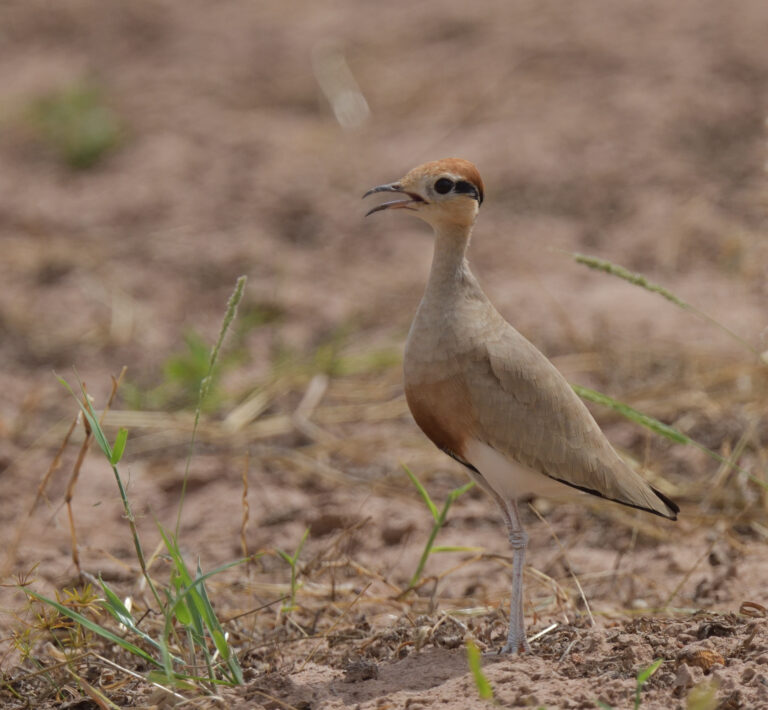
Moving on again, we stop at ‘Solomon’s Waterhole’, and wait in the shade as a steady stream of birds visits the pool to drink including Laughing and Namaqua Doves, Black-billed Wood Dove, Common Bulbul, Northern Red Bishop, Yellow-fronted Canary, Grey-headed Sparrow, Red-cheeked Cordon Bleu and Black-rumped Waxbill, plus Chestnut-backed Sparrow Lark, Bush Petronia, Cinnamon-breasted Bunting and the remarkable Sahel Paradise Whydah which are all new birds for the ever growing list.
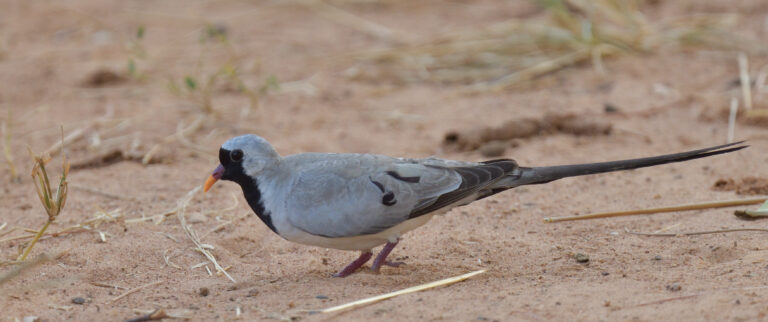
Next stop is at the Kaur wetland, a winter home for well over 100 Collared Pratincoles, where we also find a Curlew Sandpiper, a Black Crake, a couple of Yellow Wagtails, a few Red-rumped Swallows and Blue-cheeked Bee-eaters and best of all, the fabulous Egyptian Plover at very close range.
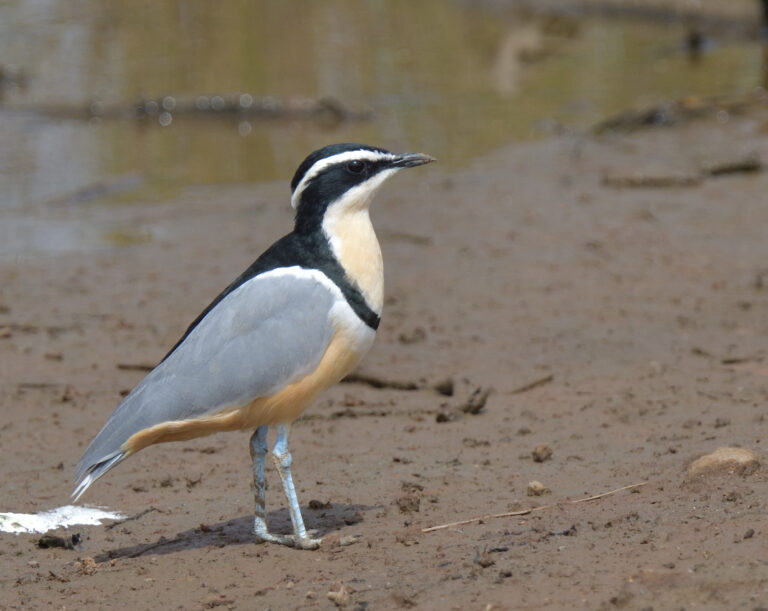
By early afternoon we arrive at a picturesque lily pool near Njau, an ideal location for a picnic lunch while watching birds like Black-headed Heron, White-faced Whistling Duck, African Jacana, Spur-winged Lapwing, Red-throated Bee-eater and Pied, Woodland and Malachite Kingfishers. After lunch we spot another Egyptian Plover and then a Gabar Goshawk flashes by on the hunt for small birds like Red-billed Firefinches.
Last stop of the day is at a clay quarry near Wassu, home to hundreds of Red-throated Bee-eaters, as well as Intermediate Egret, Grasshopper Buzzard, Bush Petronia, Greater Blue-eared Starling, Black-faced Quailfinch and another Sahel Paradise Whydah. After crossing the Gambia River again, this time on a ramshackle ferry, we arrive at Janjanbureh on an island in the river.
Yellow-throated Leaflove and Yellow-crowned Gonolek entertain us in the guesthouse garden over breakfast this morning before we depart at 7.30am sharp on a long drive east to our next base at Wassadu Camp in Senegal. We leave Janjanbureh across a bridge, back to the south bank for a drive of an hour or so to the town of Basse in the Upper River Division of The Gambia where we stop for petrol and provisions for lunch. Bronze-tailed Glossy Starlings in the trees above the filling station are new for the trip while the grove of trees next door is alive with sizeable Straw-coloured Fruit Bats restlessly hanging around in noisy groups.
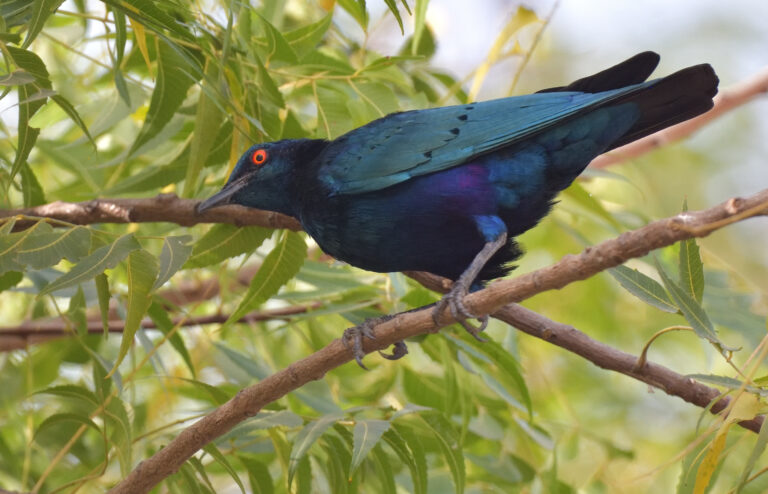
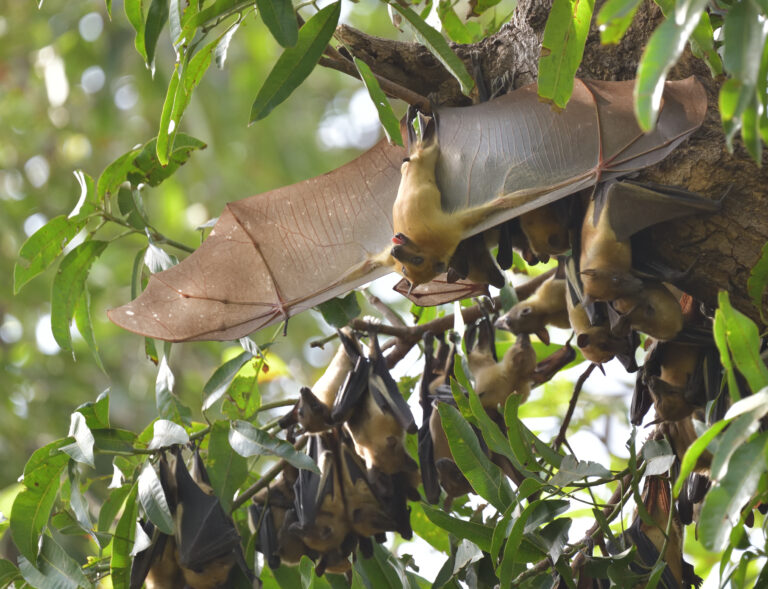
After another half hour or so on the road we reach the Gambia-Senegal border crossing, where the fingerprint formalities on the Gambian side take far longer than the simple stamping process on the Senegalese side where we spot a pair of Cut-throat Finches inspecting abandoned Village Weaver nests. From here it’s another two hours or so on a long straight road through small villages of thatched huts to our next base at Wassadu Camp on a low river cliff overlooking the much narrower Gambia River at this point. Sitting on the riverbank, our driver Pappisse rustles up a tasty picnic lunch while local guide Ebrima rustles up a calling Pearl-spotted Owlet in a nearby tree.
Our 4.30pm boat ride sets off at 5pm and as we cruise downstream, we are soon seeing loads of Red-throated and Northern Carmine Bee-eaters along with Woodland and Pied Kingfishers, an African Fish Eagle, a pair of White-crowned Lapwings and another Egyptian Plover, followed by Purple Glossy Starlings, African Harrier Hawk and African Pied Wagtail, whereupon we turn round. On the way back upstream, a Western Reef Heron heads in the opposite direction and then we find tiny Yellow White-eyes, a couple of Striated Herons, two Swamp Flycatchers, several Yellow-backed Weavers, a band of Black-capped Babblers and a Grey-headed Kingfisher which is new for the trip, making eight different Kingfishers so far! Once the sun has set, a flock of Squacco Herons head upstream to roost while the air is full of dozens of hawking Broad-billed Rollers, more than I have ever previously seen together. After dark thousands of insects produce a cacophonous chorus, while the bird list collation at the dinner table attracts a variety of ‘bugs’ in all shapes and sizes.

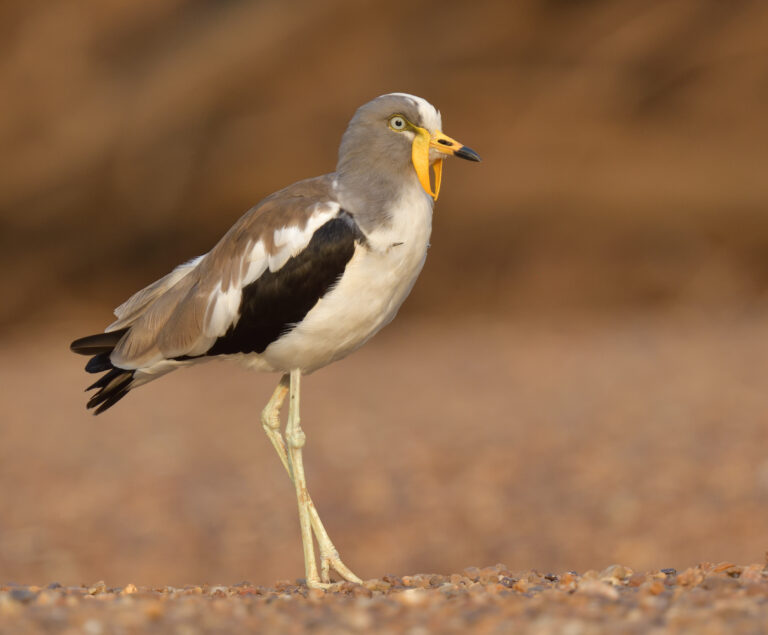
It’s chilly this morning for the first time so far on this trip, with mist hanging over the river. After breakfast, we set off for the nearby Niokolo-Koba National Park, where a battered old Nissan pickup truck, crudely converted into a ‘safari jeep’ is waiting to take us into the park. Bouncing along a bumpy dirt track through the dense bush, we regularly need to duck overhanging branches and brush off an assortment of ‘buglife’, as well as leaves, stems and seeds. Four-banded Sandgrouse are our first new sighting, followed by a roving band of about ten White-crested Helmetshrikes, an impressive male Abyssinian Ground Hornbill and a slender Common Duiker in the middle of the track. Further along the track, we follow a swaggering Nile Monitor Lizard and find Defassa Waterbuck, handsome Kob Antelope and Wahlberg’s Eagle. A huge troop of at least 200 Baboons stampedes across a clearing, presumably spooked by a circling Martial Eagle and then a passing Bateleur also shows well.
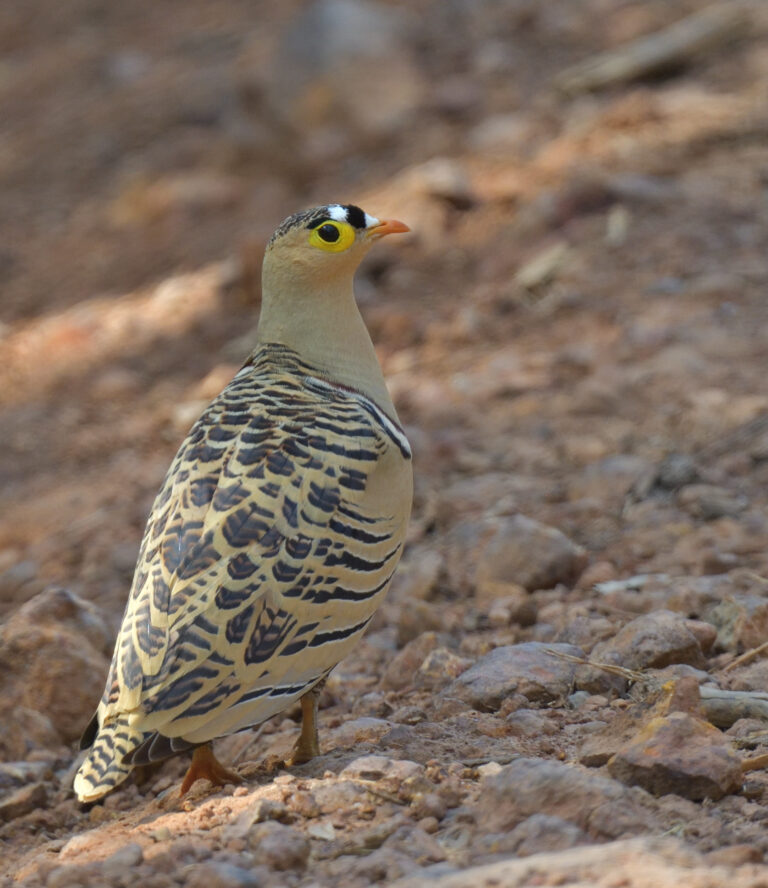
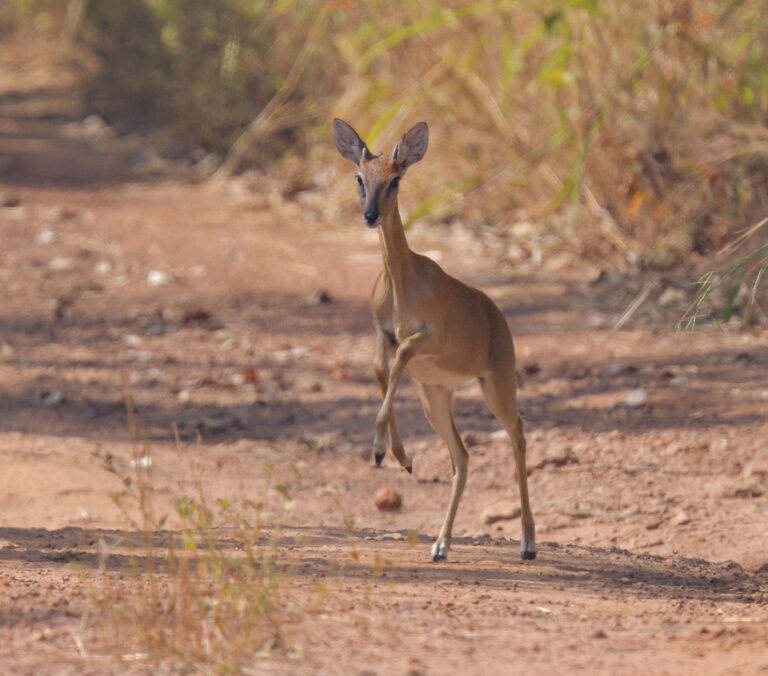
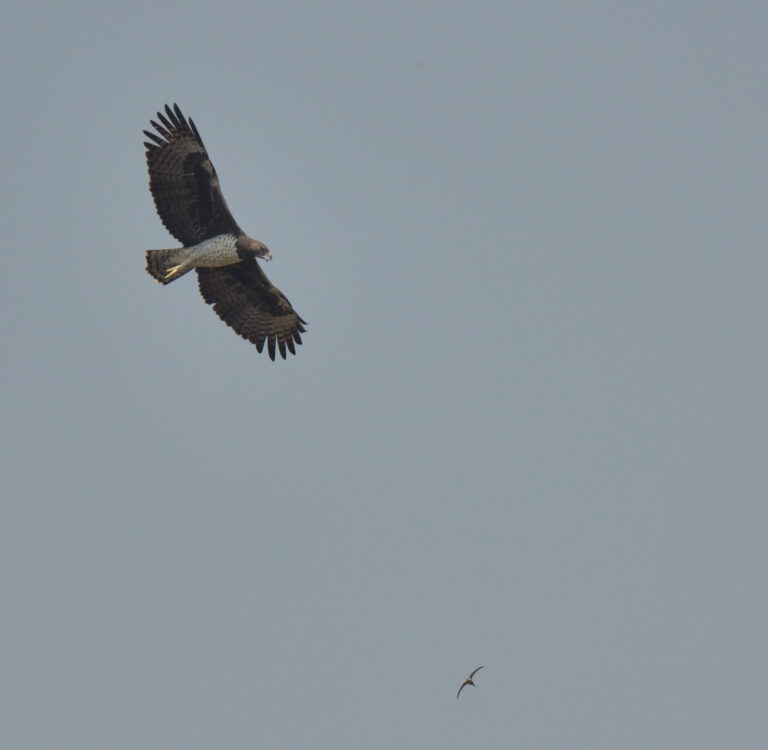
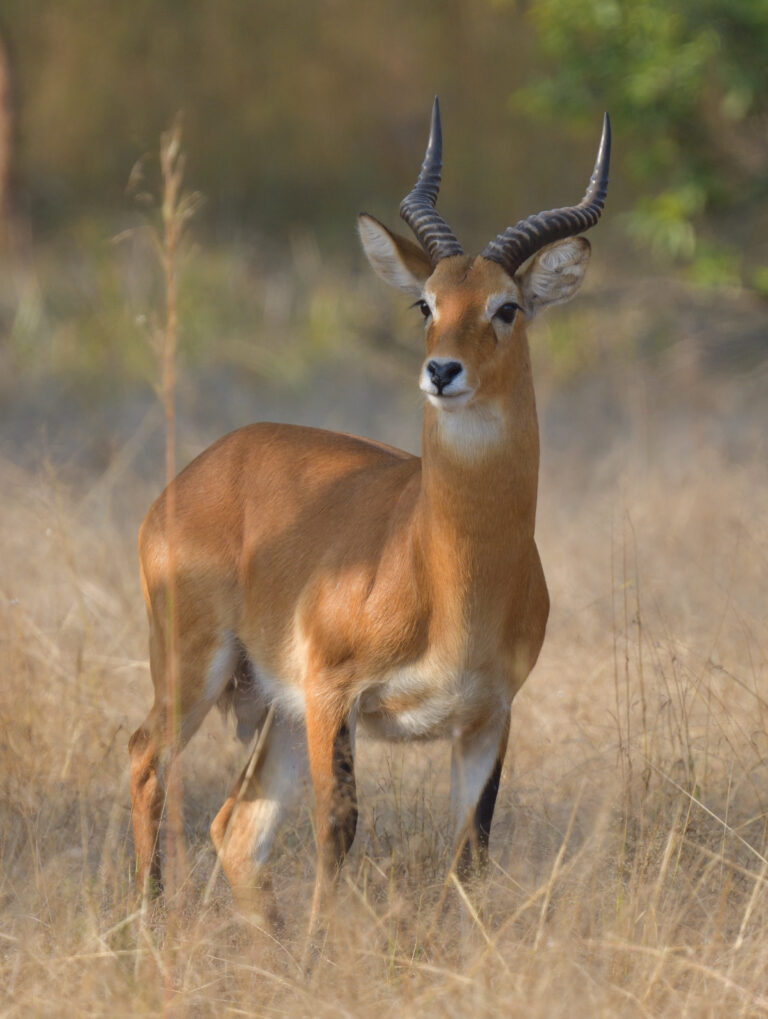
After lunch (chicken as usual) at Camp du Lion, shaded by tall trees, we find a Pearl-spotted Owlet being mobbed by Common Bulbuls and a pair of Northern Puffbacks. On the return drive, there are plenty of pedestrians on the track, such as Bushbuck, Red-flanked Duiker, Sun Lark and lots of Helmeted Guineafowl, Stone Partridges, Double-spurred Francolins and Four-banded Sandgrouse.
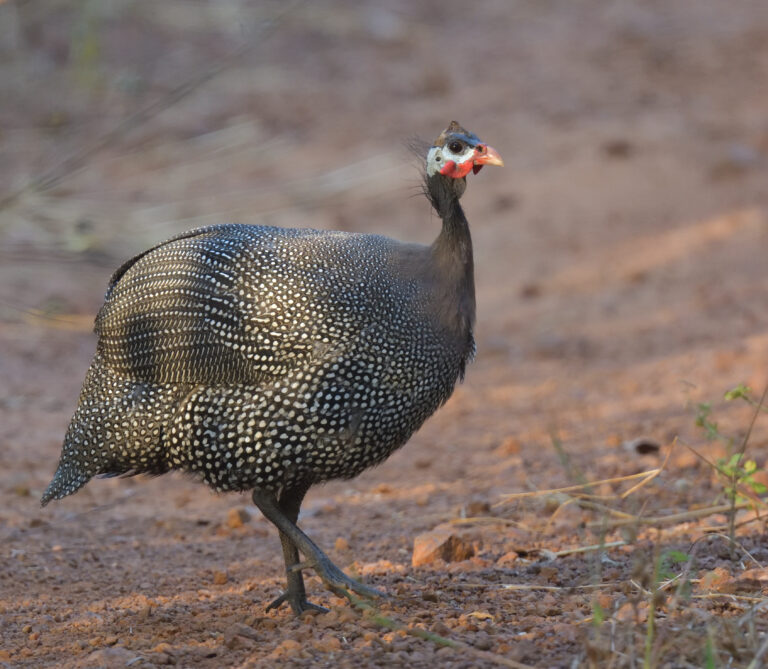
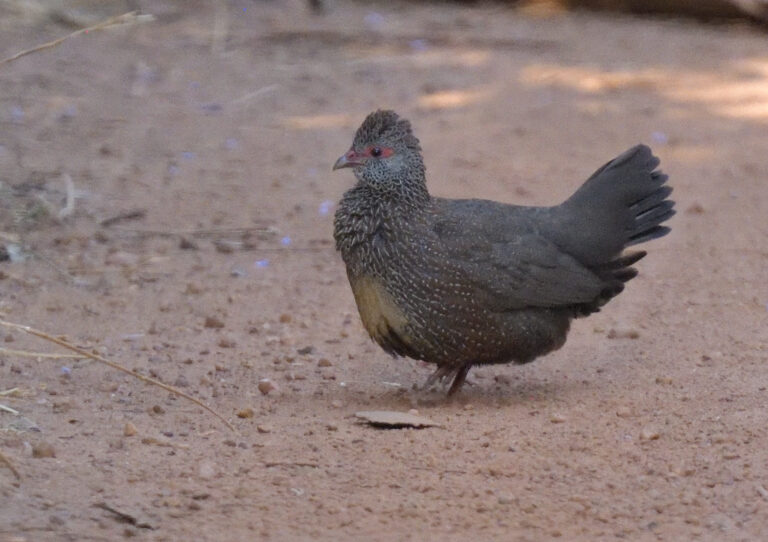
Today we begin with a pre-breakfast boat ride up the Gambia River, departing at 7am in good time to watch the sun rise over the trees and burn off the early morning mist, with African Palm Swifts whizzing around overhead. Early birds include Grey-headed Kingfisher, Striated Heron, Yellow-crowned Gonolek, Palm-nut Vulture and Black-capped Babblers. Cruising on we add African Pied Wagtail and Pied Kingfisher to the day list, along with Senegal Thick-knee, Giant and Woodland Kingfishers and another obliging Egyptian Plover, while African Finfoot and Spur-winged Geese are new for the trip. A group of eight Hippos in midstream is a good point to turn back. Drifting downstream we spot Black-crowned Night Heron and both Blue-breasted and Malachite Kingfishers, making six different kingfishers before breakfast!
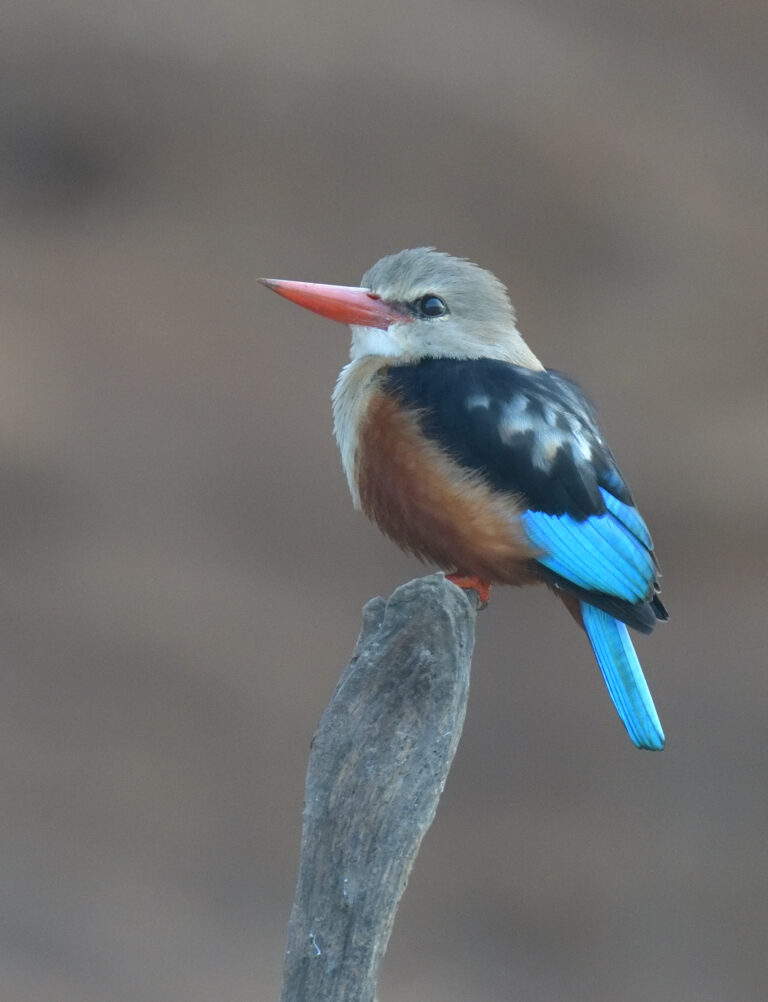
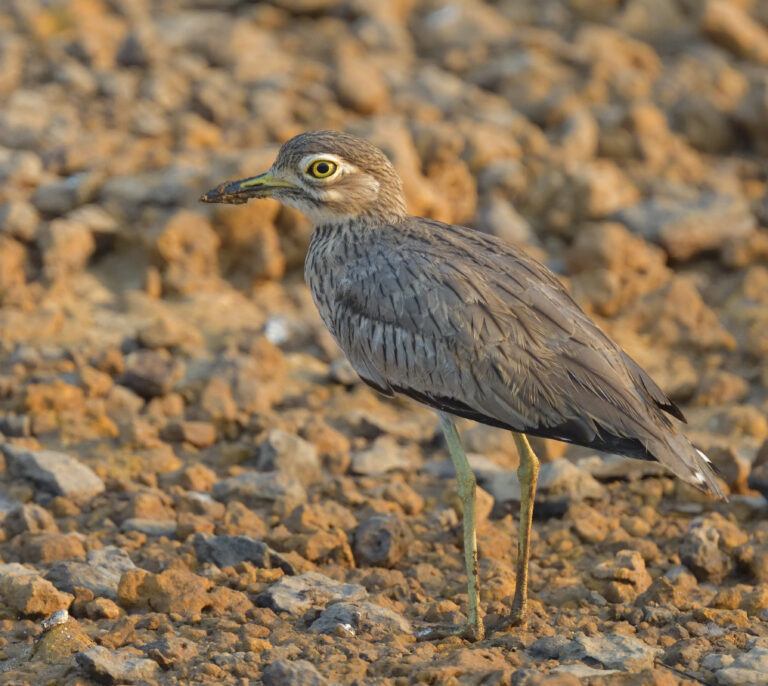
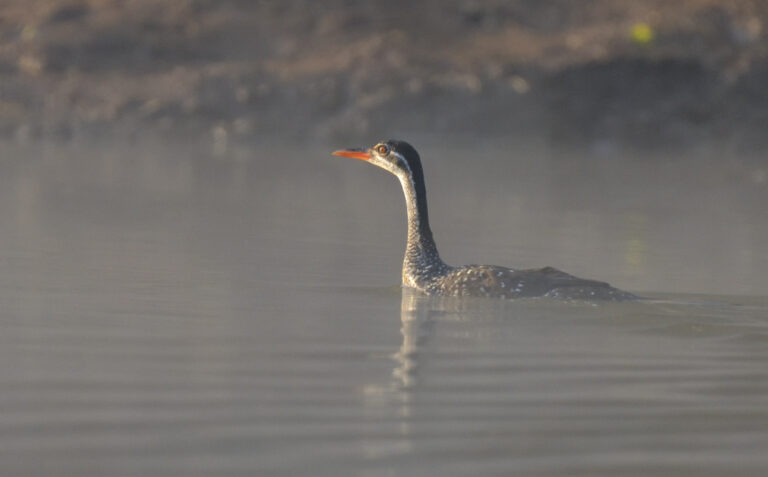
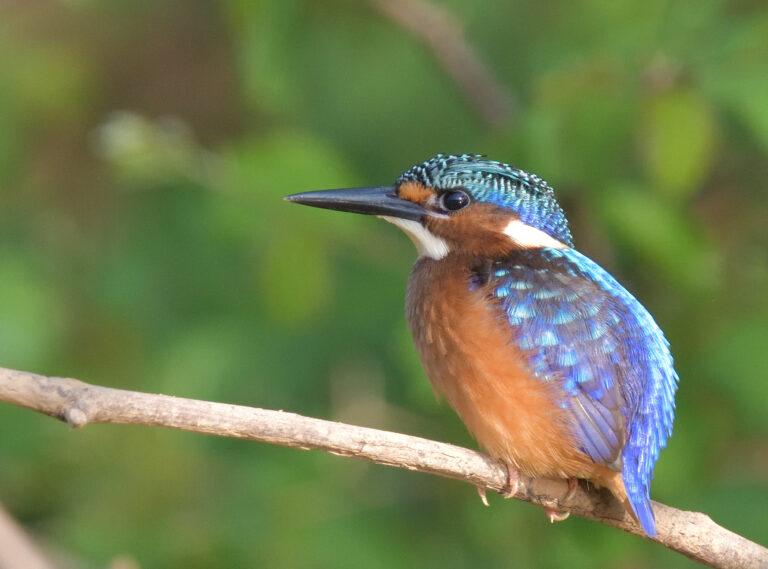
After breakfast, on a stroll along the track out of Wassadu Camp we spot Scarlet-chested Sunbird, Northern Black Flycatcher, Olivaceous Warbler, a posing Grey Kestrel, a female Northern Puffback and a pair of Cardinal Woodpeckers all from one spot. Further along the track, we also find Senegal Coucal, Brown Babblers, Yellow-billed Shrike, Levaillant’s Cuckoo, Sahel Paradise Whydah and a pair of Grey Woodpeckers. Common Bulbuls causing a commotion lead us to another Pearl-spotted Owlet, with starring yellow eyes and another pair of ‘eyes’ in the back of its head, and we end this productive spell with Greater and Lesser Honeyguides, Fine-spotted Woodpecker, Senegal Batis and a calling Broad-billed Roller.
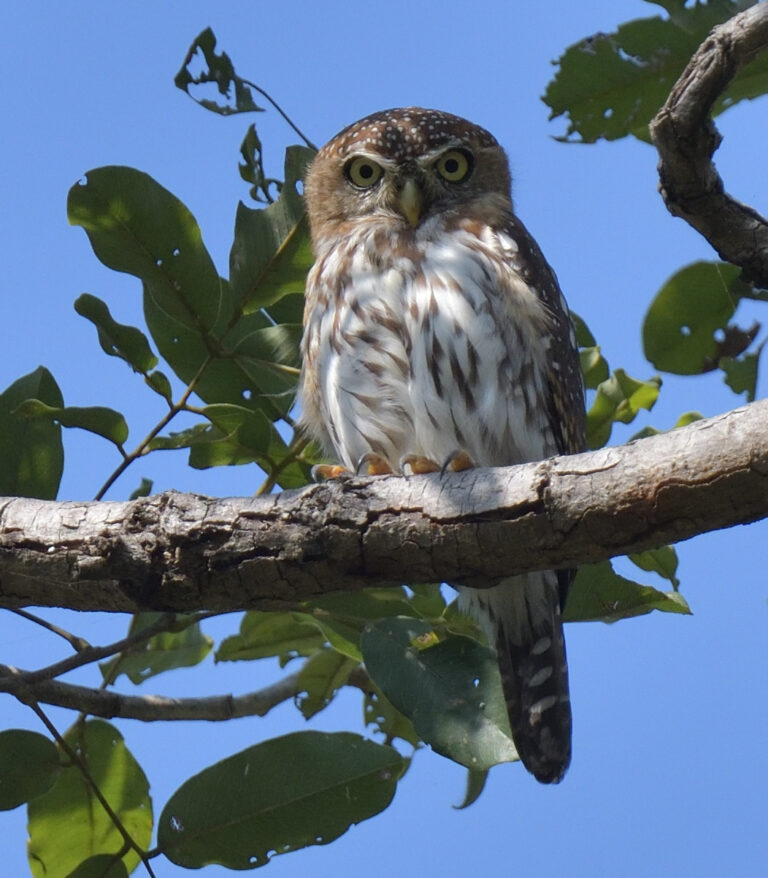
Back at the entrance gate to the national park we rendezvous with our driver for another bumpy white knuckle ride through the bush, spotting Patas Monkeys and a female Abyssinian Ground Hornbill perched in a tree, on the way to our next base inside the park at Simenti, in time for another chicken and rice lunch.
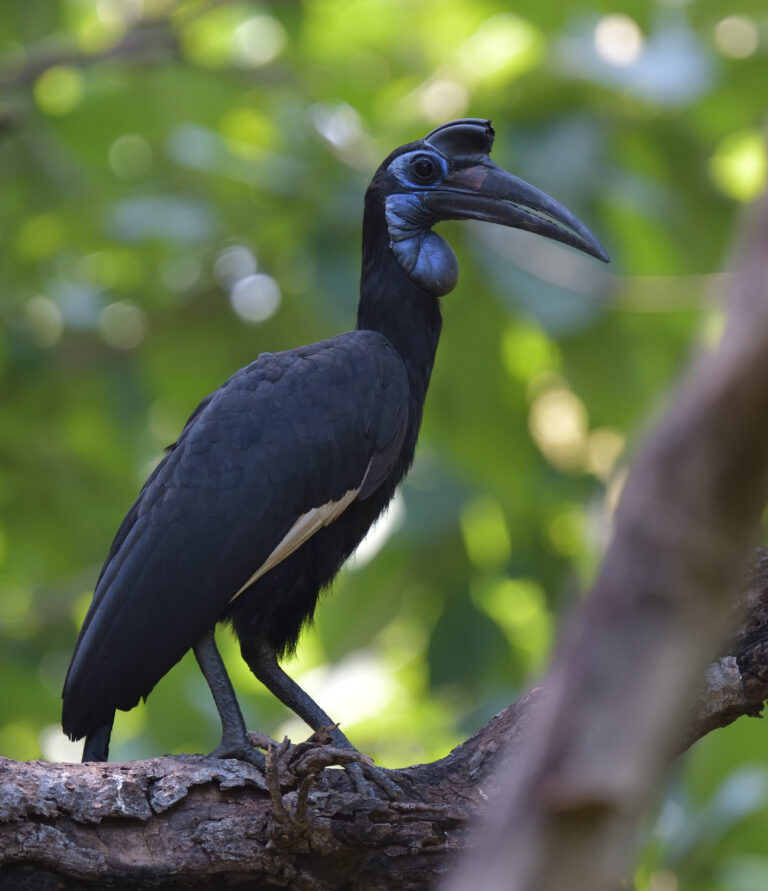
This afternoon’s plan is to drive to a site for Black-crowned Cranes, so we once more climb the ladder into the back of the jeep and soon after setting off, we find a group of comical Helmeted Guineafowl running back and forth as they erratically chase each other around like ‘headless’ chickens, and then a Sparrowhawk-like Shikra dashes at one of the Guineafowl chicks although it is too big for the diminutive hawk, which disappears ‘empty handed’. Moving on, we find a Warthog with a Piapiac perched on its back and then admire a Lizard Buzzard perched very obligingly in a dead tree beside the track. Arriving at Mare Woeni, a large flooded grassy clearing in the dense bush, we find African Jacana, Black-headed Heron and Senegal Coucal, while numerous African Grey Hornbills make buoyant flights across the clearing. After a short watch, two Black-crowned Cranes provide a fleeting glimpse as they emerge from the long grass to fly away, and on the way back to Simenti a group of Banded Mongooses crosses the track, and we find a Stone Partridge calling noisily from a tree next to the track.
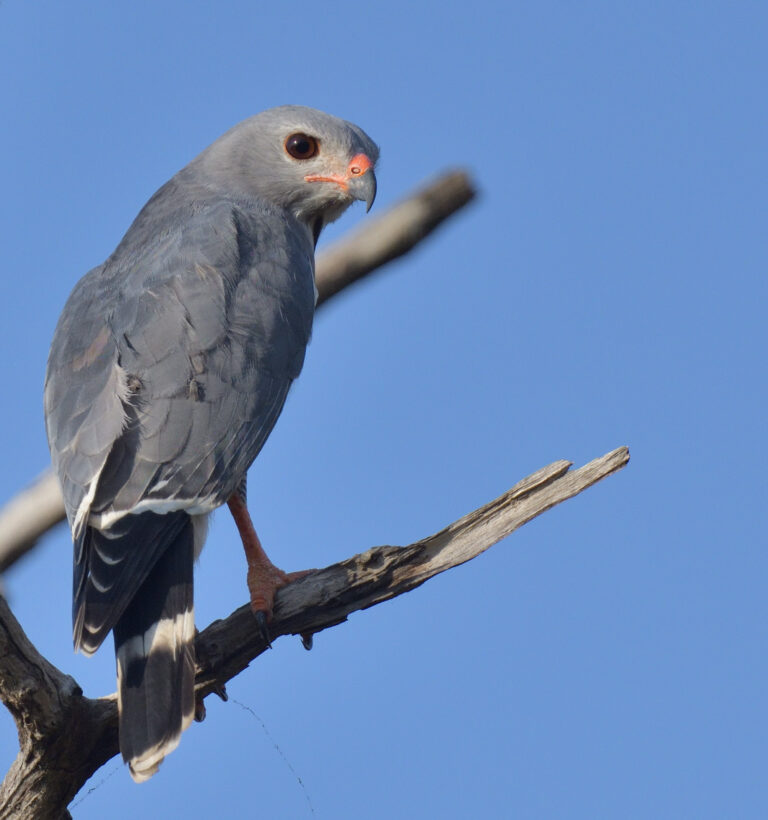
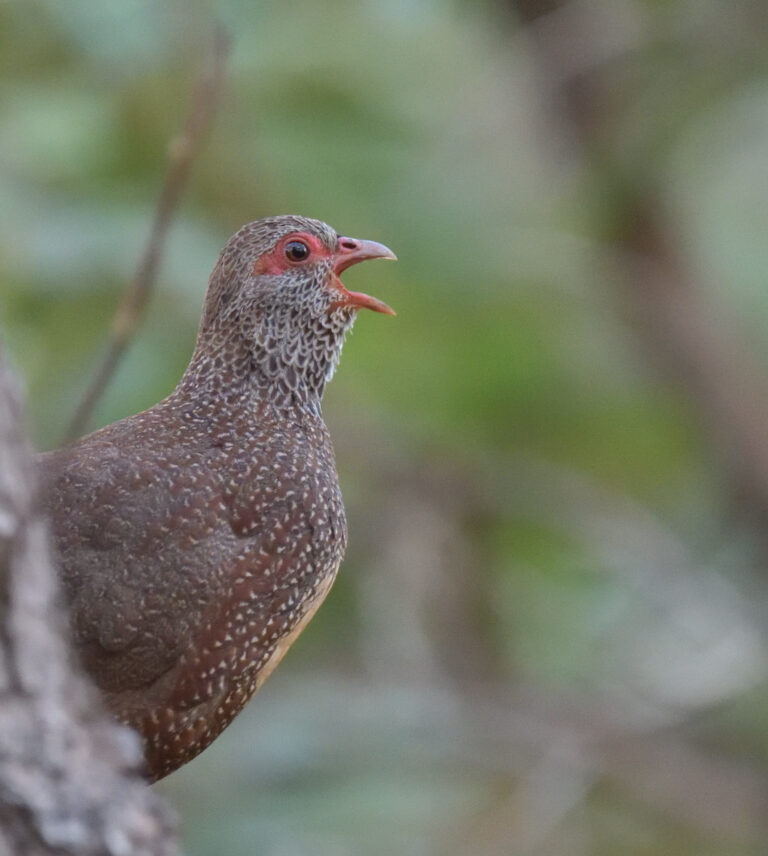
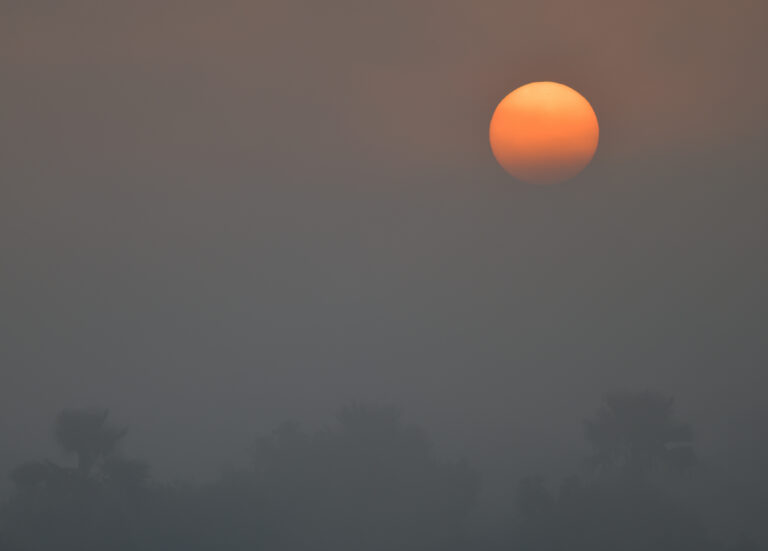
There’s a lovely still sunrise over the Gambia River just after 7am this morning and by 7.25 we have found one of our main targets within the hotel grounds, the scarce Adamawa Turtle Dove, in a tree along with Red-eyed Doves. After an al fresco breakfast along with ever watchful Vervet Monkeys up to their usual ‘monkey business’ and an oblivious Warthog, we continue our exploration of the hotel grounds, finding Swamp Flycatcher down by the river, another Egyptian Plover on the opposite bank, a Shikra sitting on a palm frond and best of all, a stunning Verreaux’s Eagle Owl starring at us from an exposed branch with big black eyes. From here we make the bumpy two hour drive back to the park entrance, again ducking low hanging branches as we go. Shaken but not stirred, it’s clear that West Africa is not for wimps.
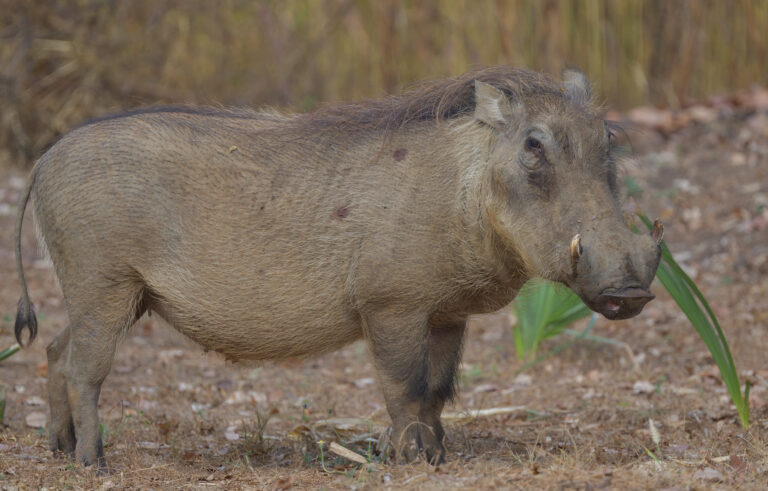
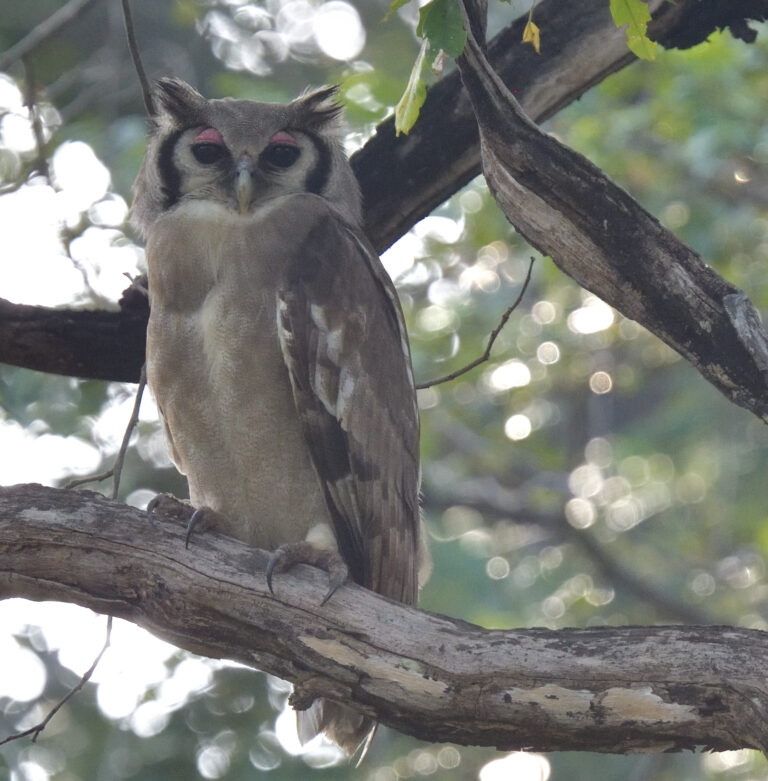
Before setting off on the journey back to The Gambia, I give a few pencils to a handful of small well-mannered children. Within seconds, word gets out as dozens of children in green uniforms gather around the vehicle as if Beatlemania has engulfed the village, so we bundle ourselves back into our waiting vehicle and set off back to Janjanbureh in The Gambia.
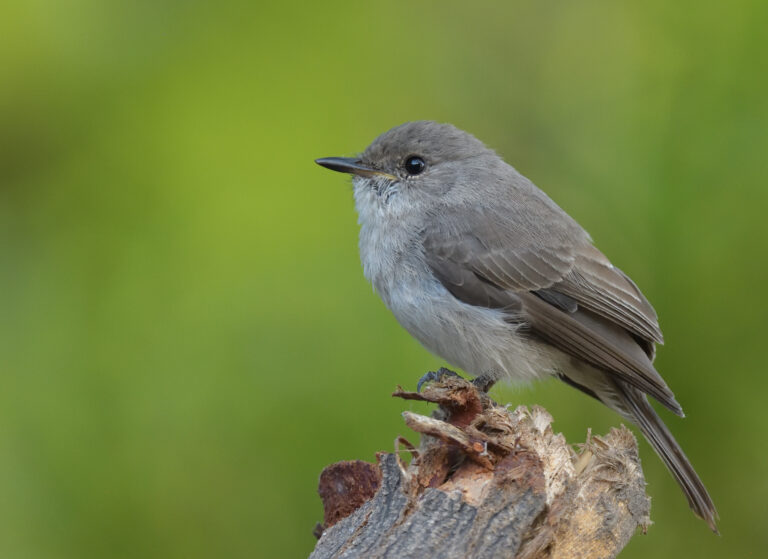
A Swamp Flycatcher perched right outside our riverside rooms is first on the day list today, shortly followed by a Hamerkop flying over the river. After breakfast, we visit the nearby Bansang Quarry, where the sandy cliff faces are riddled with dozens of Red-throated Bee-eater nest holes, while African Grey Hornbills seem to be calling all around. In one tree we watch Yellow-fronted Canary, White-rumped Seedeater, a calling Yellow-fronted Tinkerbird and a superbly lit Purple Glossy Starling, while a Grasshopper Buzzard circles overhead. Further sightings include Bush Petronia, Northern Red Bishop, Red-billed Quelea, Cinnamon-breasted Bunting, a pair of Giant Kingfishers and a Fork-tailed Drongo repeatedly swooping low to snatch a drink from a pool. Moving on into the bush we find Northern Crombec, Little Weaver and a glistening green Diederik Cuckoo.
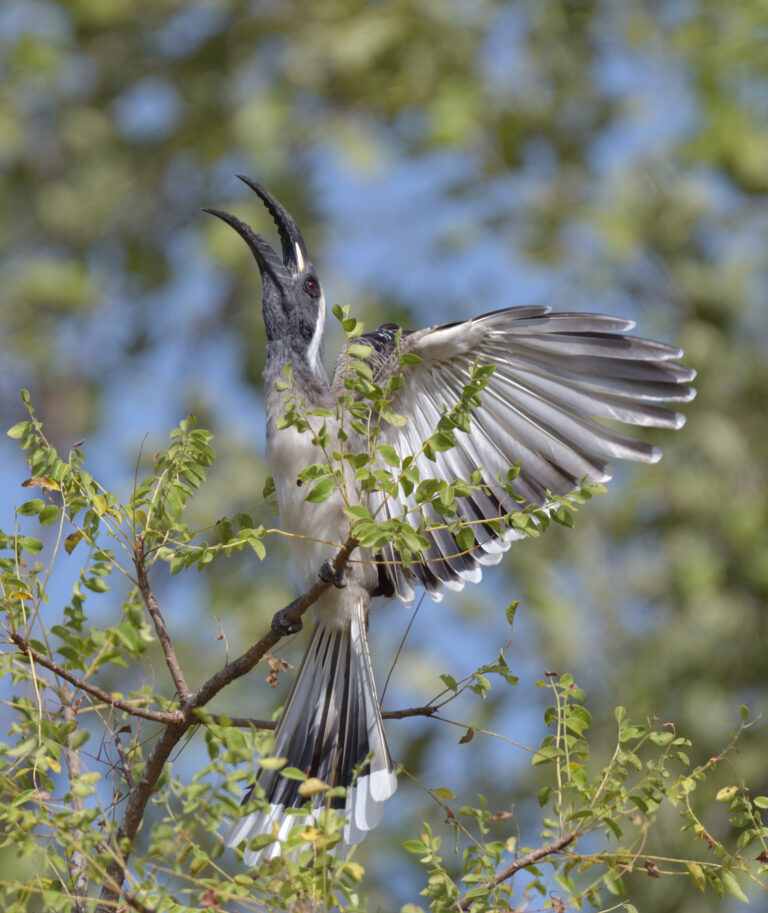
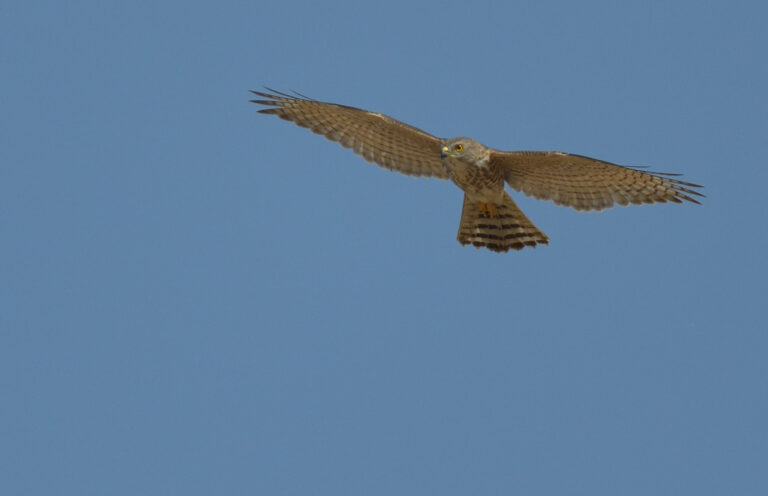
On the drive back to the guesthouse, a mini raptor fest includes Hooded Vultures, Wahlberg’s and Tawny Eagles, African Harrier Hawk and Red-necked Buzzard.
After lunch back at the guesthouse, we rush out to catch the ferry across to the north bank, but as it’s Friday, the ferry is running on a Sunday schedule! Once across, we head for the enigmatic Wassu Stone Circles built between the third and sixteenth centuries from upright rock pillars up to 8.5 feet tall! How on earth did they manage to extract the blocks from the ground, carve them without modern tools and then move them to the site in such a hot climate? While here we also find Senegal Eremomela and Little Green Bee-eater. Next, we take a boat trip along the river to the forested islands of The Gambia River National Park, home to families of Chimpanzees, where we spot several individuals suspended by one long arm while using the other hand to scoop up water to drink. Meanwhile, another is already building a nest platform for the night. Below the overhanging trees we spot several Hippos, while African Darters are new for the trip here.
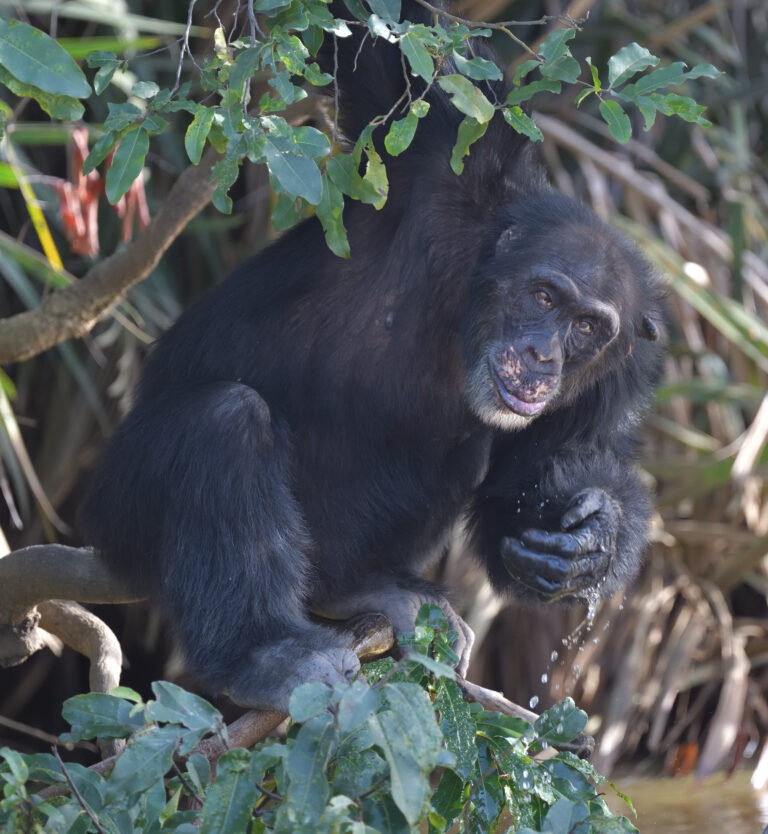
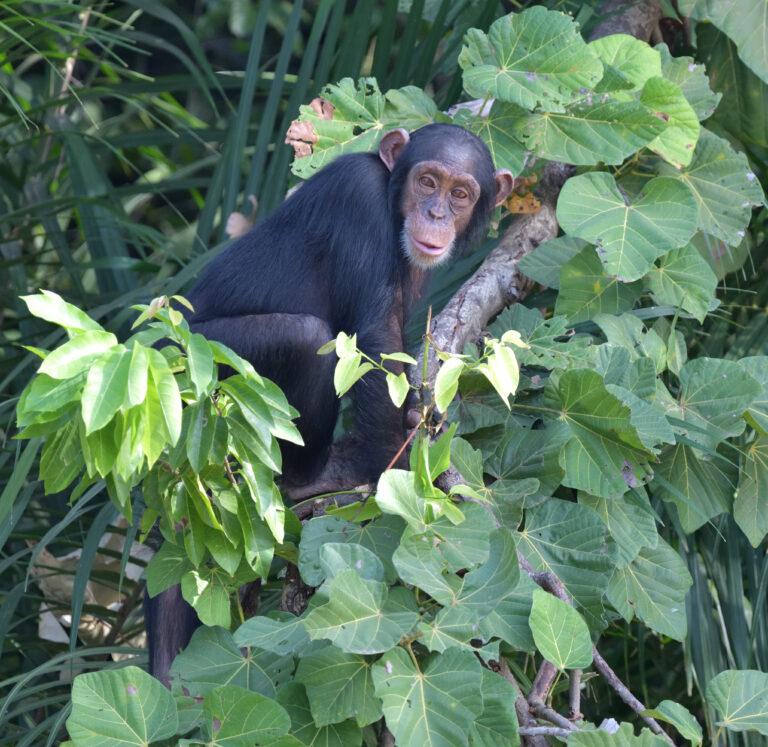
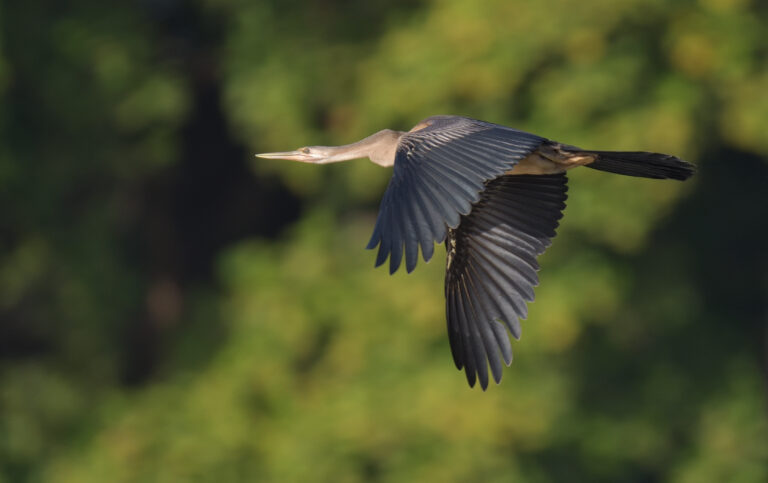
We begin today with a productive local walk in the bush near Calleh Manda where a succession of sightings begins with very chatty Green Woodhoopoes, a Yellow-crowned Gonolek, Village Indigobird and a flyby Gabar Goshawk. Bruce’s Green Pigeon shows well in the scope, followed by scope views of another Pearl-spotted Owlet. Next, we spot Yellow-billed Shrike and Scarlet-chested Sunbird as an African Harrier Hawk flies past. Further sightings include Senegal Coucal, Abyssinian Roller, Yellow-fronted Tinkerbird, Yellow-fronted Canary, Yellow White-eye, Senegal Eremomela, Grey Woodpecker, Grey-backed Camaroptera and a superb Pygmy Sunbird, and all this in just 45 minutes! At the end of the walk where we rejoin the road, we also add Black-headed Lapwing to the day list.
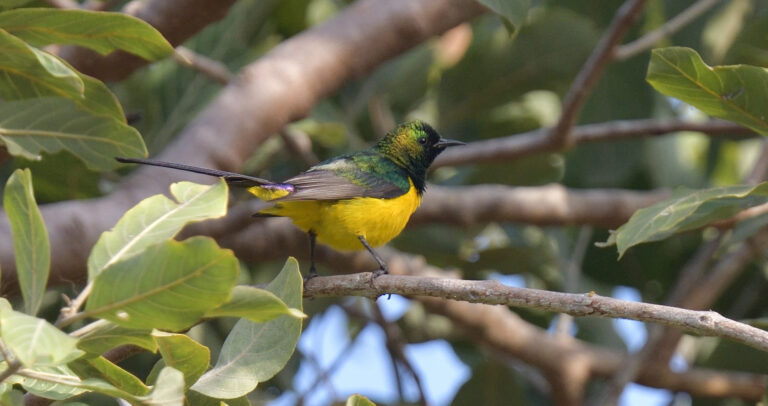
From here we head west, with a quick roadside stop to scope the nest of a pair of Marabou Storks, before passing through Brikamaba, which is a challenge on market days with so many people, donkeys and carts blocking the narrow streets. Eventually we arrive at Jahally rice fields, where picturesque pools covered with white and purple water lilies are home to Jacanas galore as well as Black Crake, Squacco, Grey, Black-headed and Purple Herons and Cut-throat Finch. On the way out of the wet fields, we notice six Yellow-billed Oxpeckers combing their bills through the fur of a cow lying down in the middle of a dry dusty football pitch.
Further west at Soma we call in for lunch with one of the families of our driver, where we are served beef stew, chicken in a peanut sauce, chips, salad and a mountain of rice, while the ‘pet’ chicken runs back and forth between the front and back doors of the single ground floor room. By late afternoon, we arrive at Tendaba Camp for a second stay and set off for a local walk at 5pm, where notable sightings include White-rumped Seedeater, Senegal Eremomela and Coucal, a band of White-crested Helmetshrikes, two Pearl-spotted Owlets and a super view of a White-faced Scops Owl, starring at us with deep amber eyes.
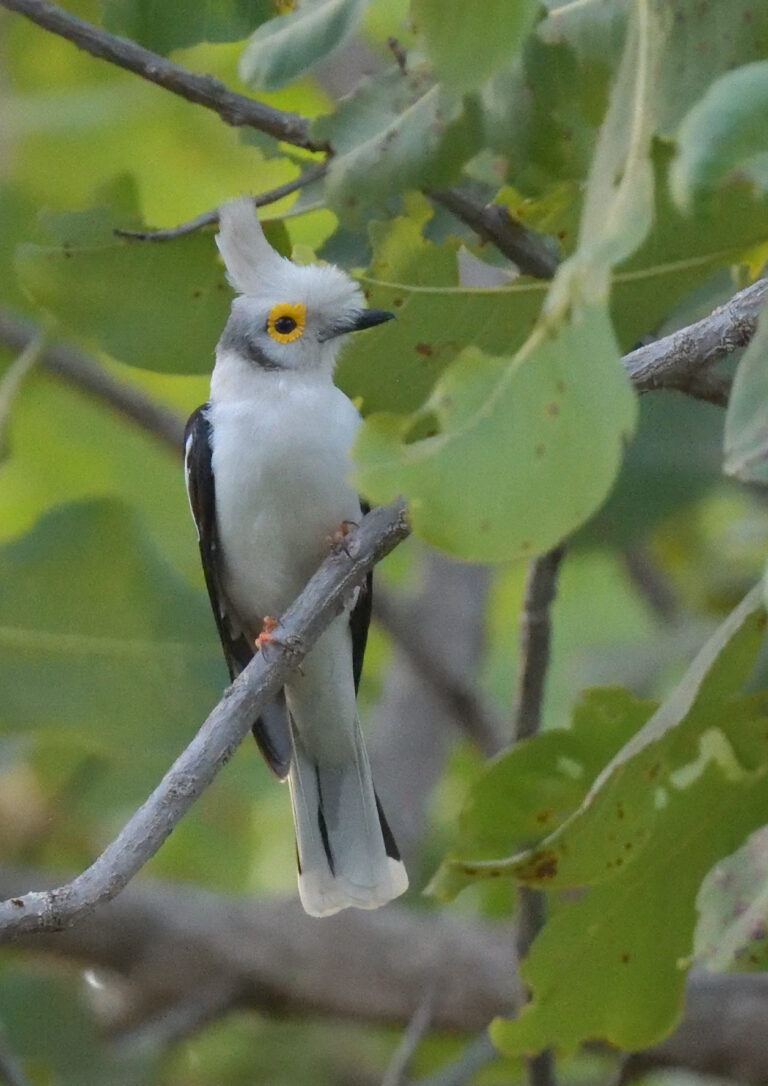
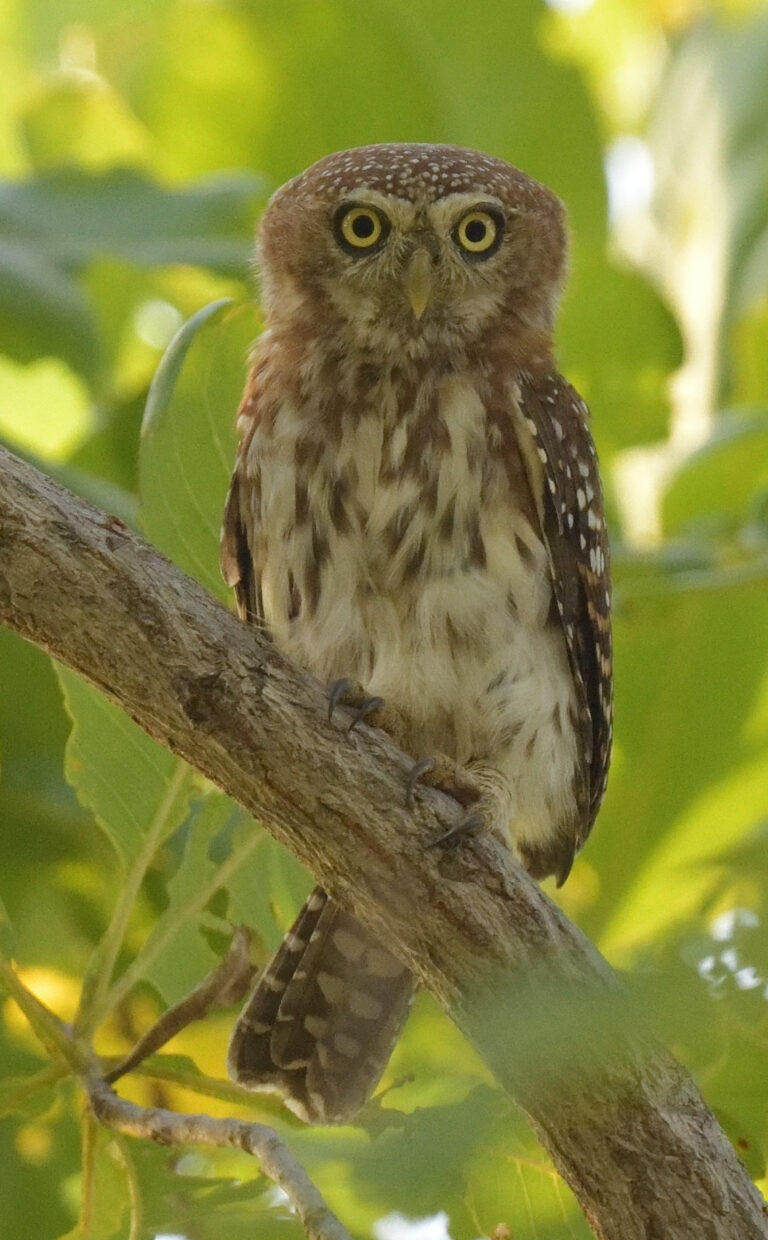
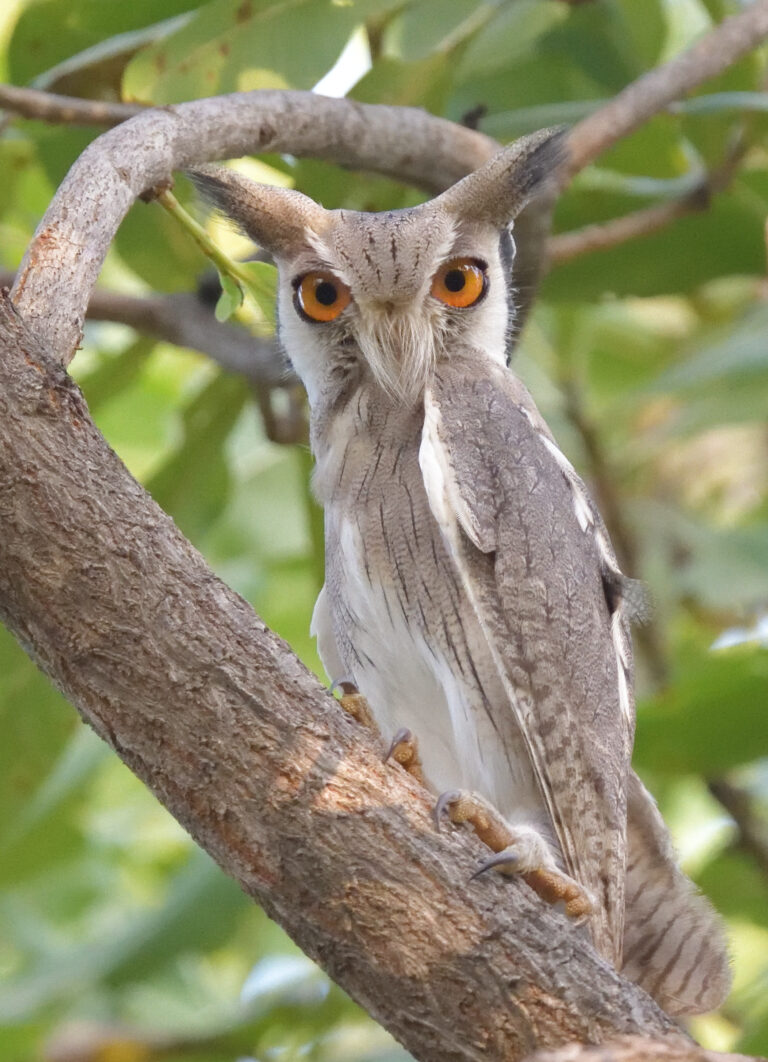
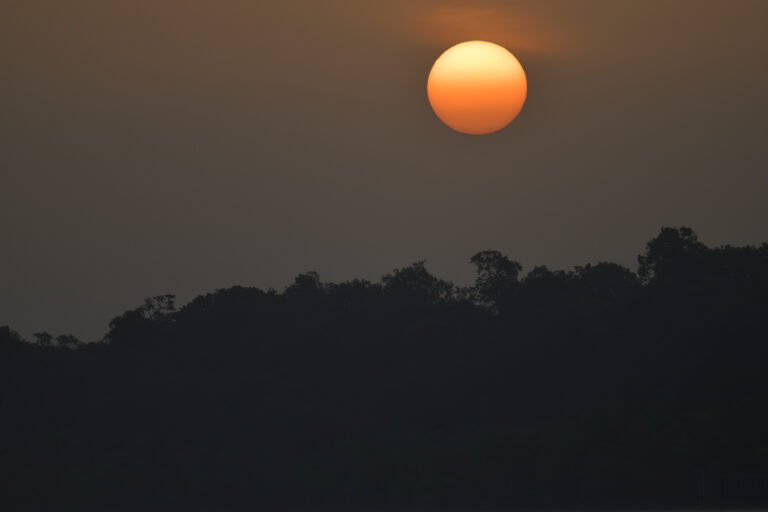
It’s Terry’s birthday, so we begin at 6.30am with a rendition of “Happy birthday to you” at the breakfast table. Just after seven, as the sun rises vertically over the south bank, we board a Pirogue and set off north across the two mile wide Gambia River passing several Caspian Terns on the way into Tunku Creek, lined by Red Mangroves where we get fleeting glimpses of the mangrove specialist Mouse-brown Sunbird, along with better views of Grey Woodpecker, Blue-breasted Kingfisher, Rose-ringed Parakeet and White-throated Bee-eater. Cruising slowly along the tranquil creek we flush several Whimbrel from the muddy edges as we go, as well as more Common Sandpipers than I ever remember seeing together anywhere else. Where the creek passes through wide open areas of saltmarsh, we find numerous Woolly-necked Storks, Pink-backed Pelicans, Gull-billed Terns and Egrets in three sizes; Little, Intermediate and Great, as well as Squacco, Grey, Western Reef and mighty Goliath Herons. Deeper into the ever-narrowing channels we also find Hamerkop, Woodland Kingfisher, Senegal Coucal and Common Wattle-eye and then pass from the counter-current of Tunku Creek into the ‘friendly’ current of Kissi Creek, where three African Spoonbills fly over and we cruise past a sizeable colony of Great Cormorants of the white-breasted African lucidus subspecies, while other sightings include Spur-winged Goose, African Darter, White-backed and Black-crowned Night Herons, Sacred Ibis, Yellow-billed Stork, Senegal Thick-knee, Ruff, an immature African Fish Eagle and Mosque Swallows, making a cruise total of about fifty different birds, and not a bad way to spend a birthday.
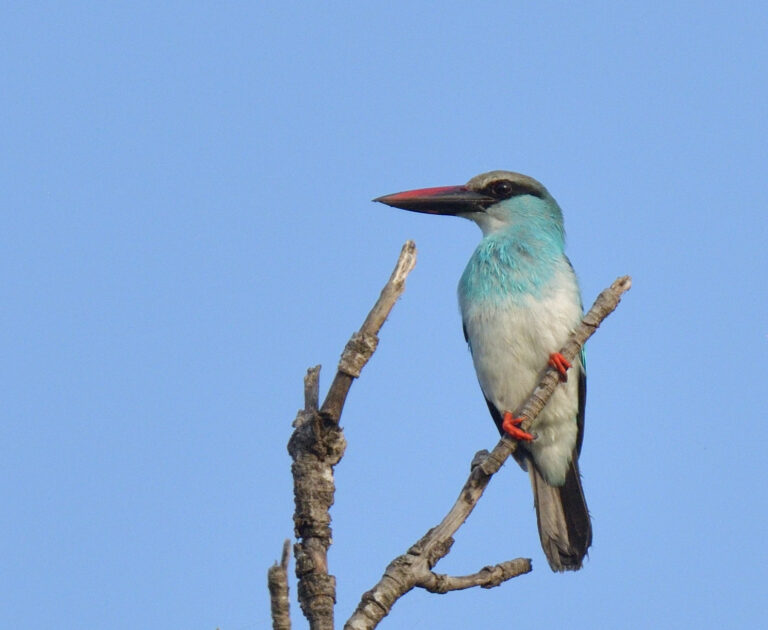
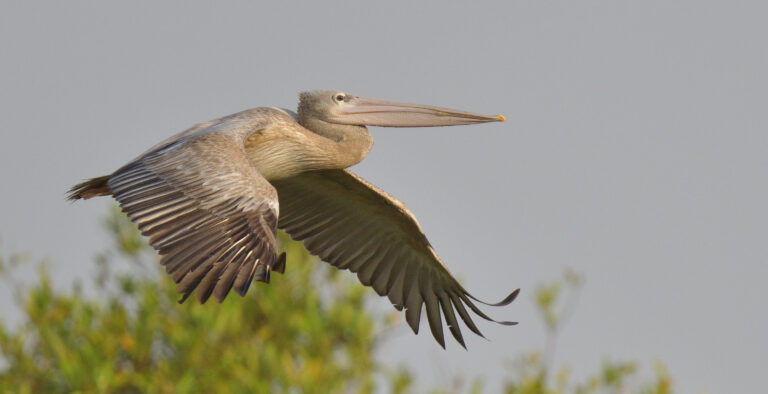
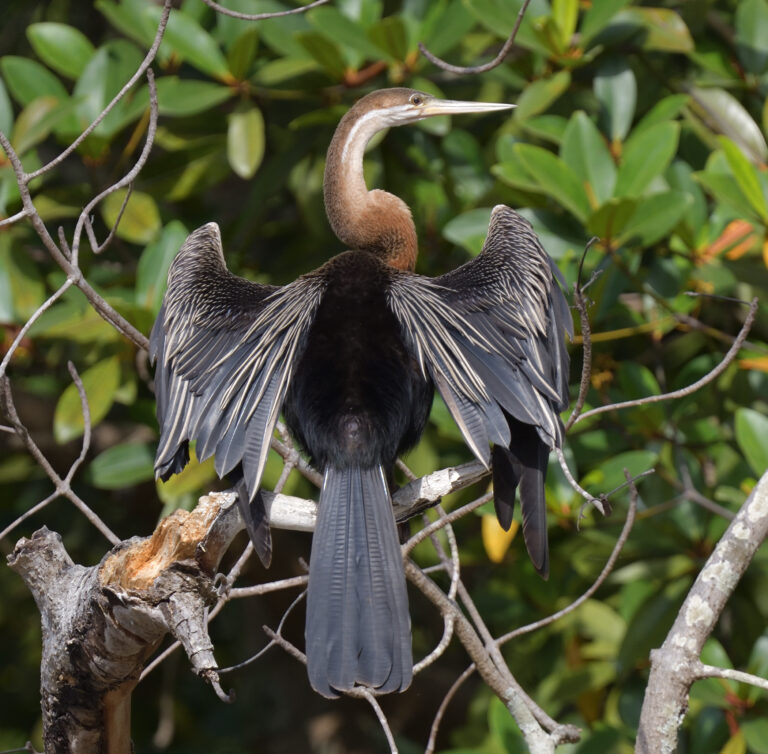
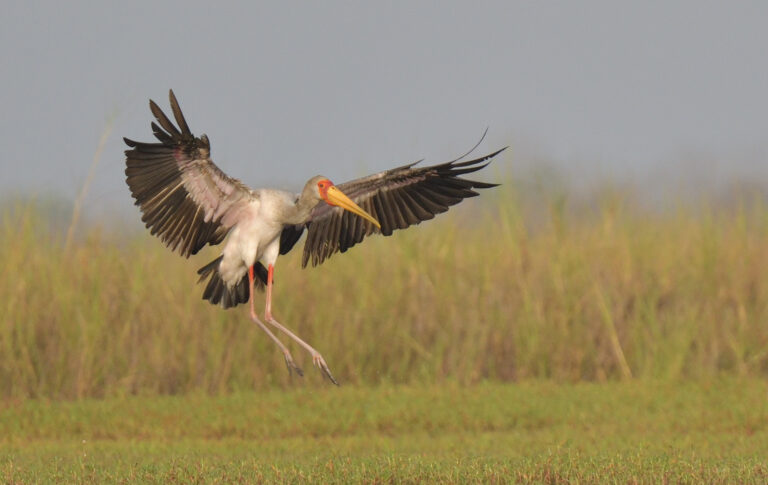
After a leisurely afternoon back at the camp, we set off for the nearby old airfield, spotting Bearded Barbet and a posing Grasshopper Buzzard on the way, while also picking up a sizeable stowaway stick insect inside the vehicle! At the airfield we find yet another Pearl-spotted Owlet, being scolded by an angry mob comprising Grey Woodpecker, Common Bulbul, Yellow-billed Shrike, Northern Puffback, Bush Petronia, a couple of Red-billed Hornbills bobbing like cockatoos, and best of all, an awesome Grey-headed Bushshrike, which is new for the trip. On the adjacent marsh we also find Senegal Parrot, Wattled Lapwing, White-faced Whistling Duck and Knob-billed Duck which is also new for the trip.
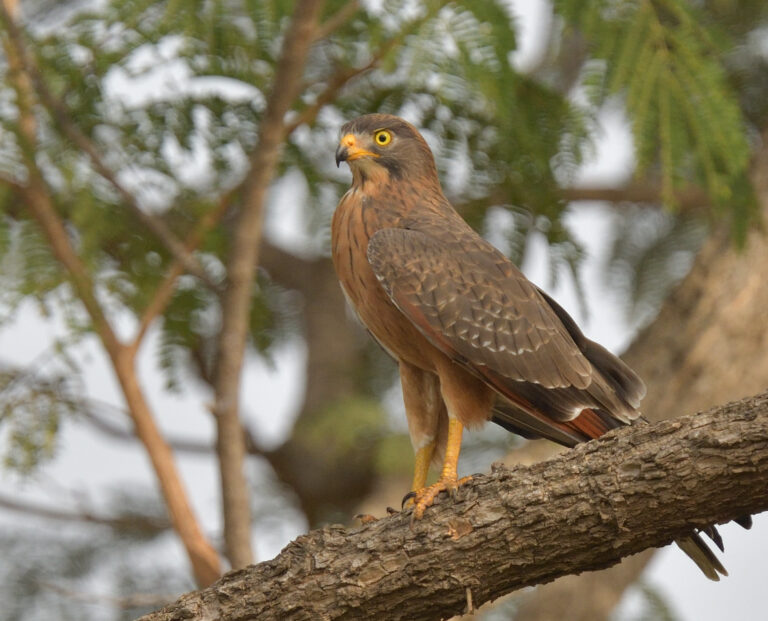
This morning we leave Tendaba Camp on our way back to the coast, but first we make a stop along a dirt track into the bush at Sibito, following a tip off from one of the local guides and soon have a nicely marked Spotted Thick-knee in the scope. Moving on, our next roadside stop produces Variable, Pygmy and Scarlet-chested Sunbirds, Vieillot’s Barbet, Senegal Eremomela, Northern Crombec, Yellow-fronted Canary and Black-crowned Tchagra which is also new for the trip. A third stop, at a large wetland, produces a mix of the familiar Ringed Plover, Common Sandpiper, Greenshank, Redshank, Whimbrel and Marsh Harrier, along with the exotic Striated and Western Reef Herons, Wattled and Spur-winged Lapwings, Palm-nut Vulture, Pied Kingfisher, Abyssinian Roller, Long-tailed Glossy Starling and a flambouyantly coiffured Long-crested Eagle which is new for the trip. Our final stop this morning is back at Kampenti where we get charged by a runaway bull which veers away at the last second and also find two African Harrier Hawks, four Blue-bellied Rollers, several Green Woodhoopoes and a Lizard Buzzard.
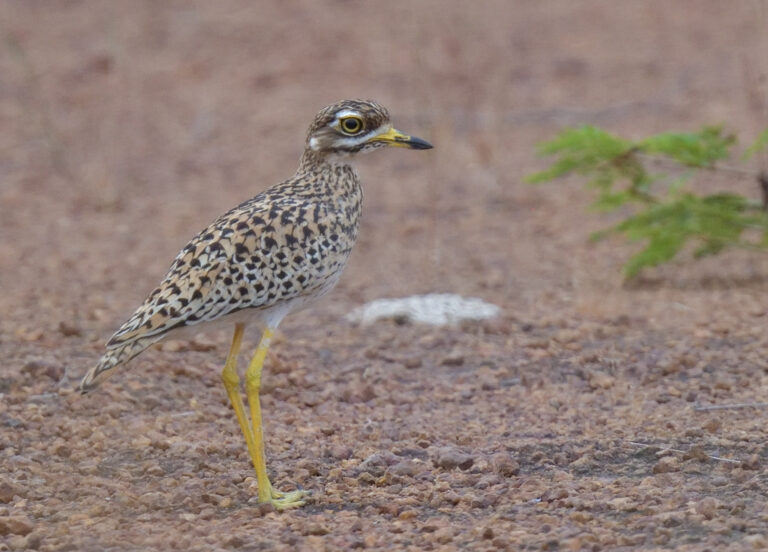
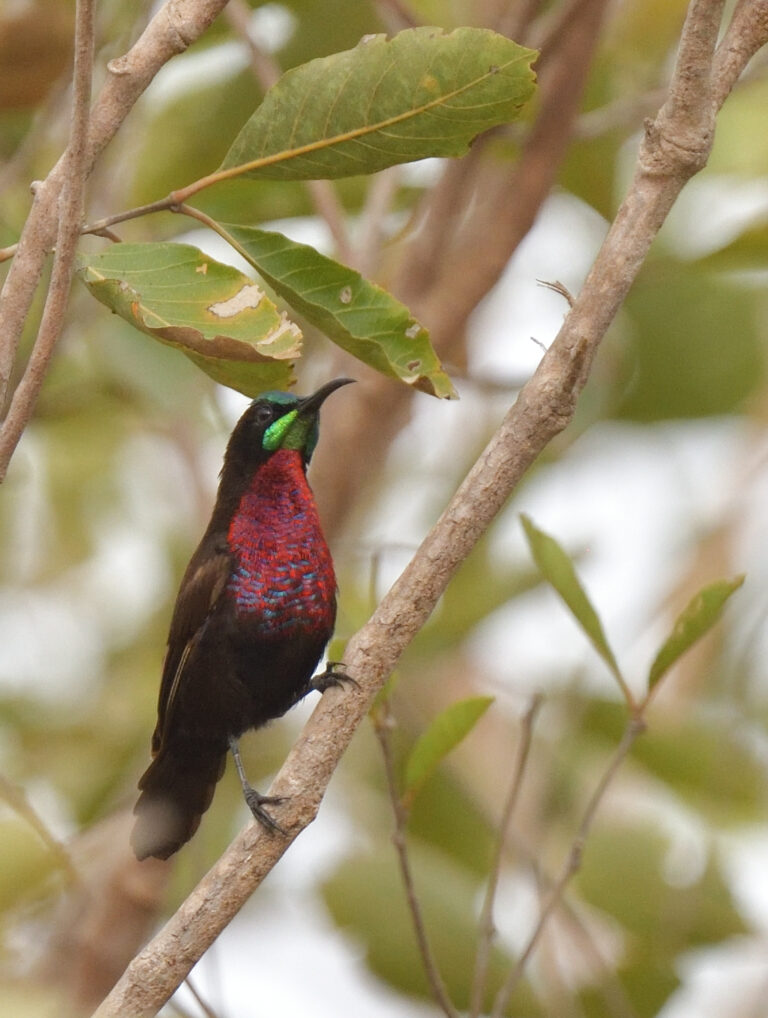
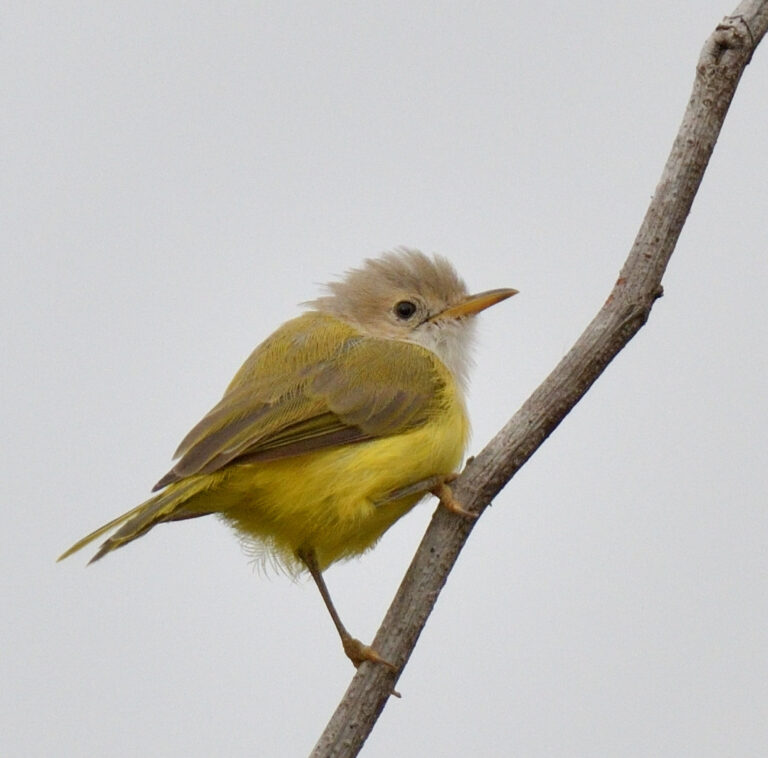
After lunch at the very plush Abca’s Creek Lodge, we rejoin the road back to the coast, where journey’s end is the Kairoh Garden guesthouse, where we began almost two weeks ago. A late afternoon stroll in the garden here produces an exotic garden bird list including Yellow-crowned Gonolek, Brown Babbler, Little Weaver, Red-cheeked Cordon Bleu, Red-billed Firefinch, Bronze Mannikin, Village Indigobird, a puffed up male Northern Puffback and even a couple of Senegal Thick-knees!
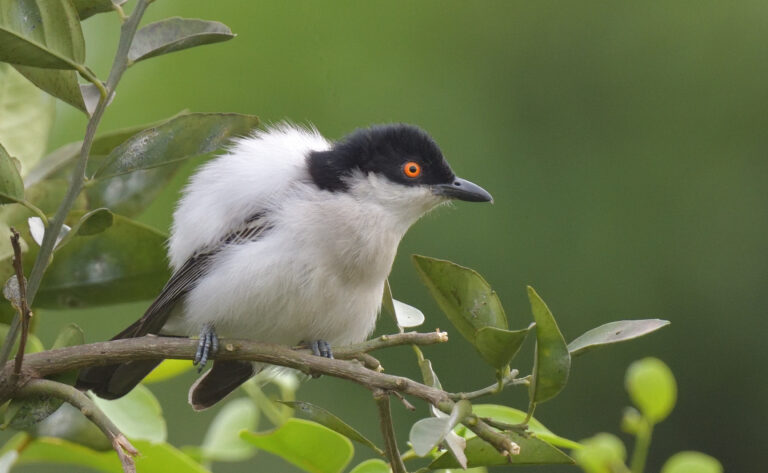
This morning we head south along the coast to the far south of The Gambia where we begin with a visit to the abandoned Kartong sand quarry which is now a beautiful wetland covered with white water lilies and teeming with a plethora of waterbirds. The first thing one notices here is the sound of hundreds of White-faced Whistling Ducks and the sheer number and variety of herons and egrets, including Squacco, Grey, Purple, Black-headed and Western Reef Herons, Black-crowned Night Heron and Cattle, Little, Intermediate and Great Egrets, plus Black Egret which is new for the trip. Purple Swamphen, Little Grebe and Osprey are also new for the trip, while other waterbirds here include Spur-winged Goose, Knob-billed Duck, African Jacana, Sacred Ibis, African Spoonbill and Pied, Giant and Malachite Kingfishers. Besides all these waterbirds, we also find African Harrier Hawk, Black-winged Kite, Levaillant’s Cuckoo, Blue-cheeked Bee-eater, Yellow-billed Oxpecker, Greater Blue-eared Starling, Beautiful Sunbird, Bronze Mannikin, Yellow-crowned Bishop and Pin-tailed Whydah.
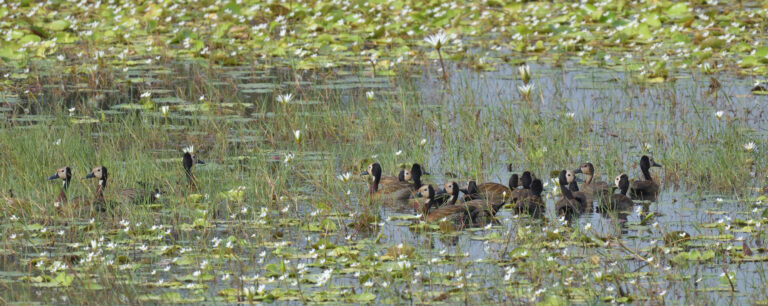
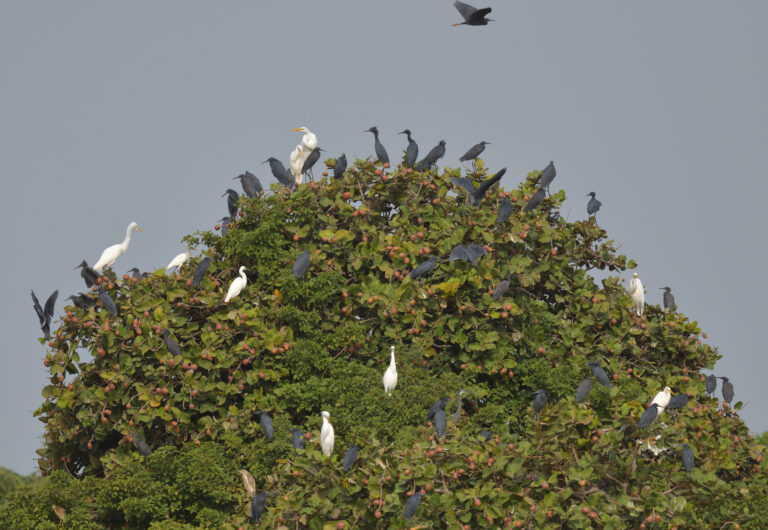
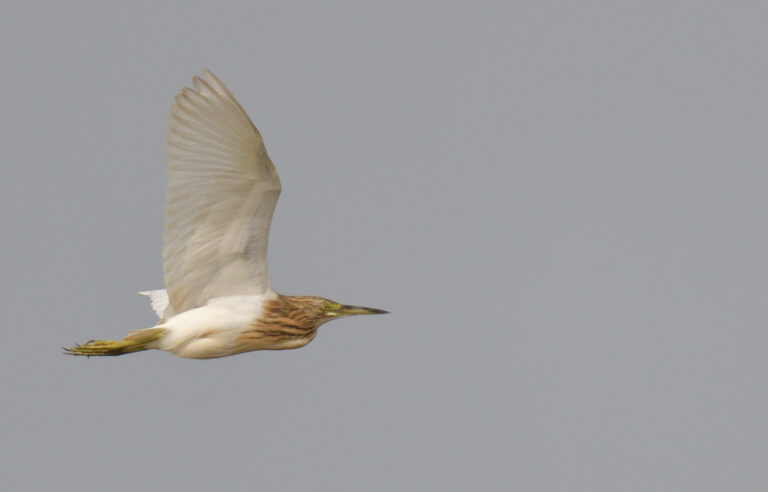
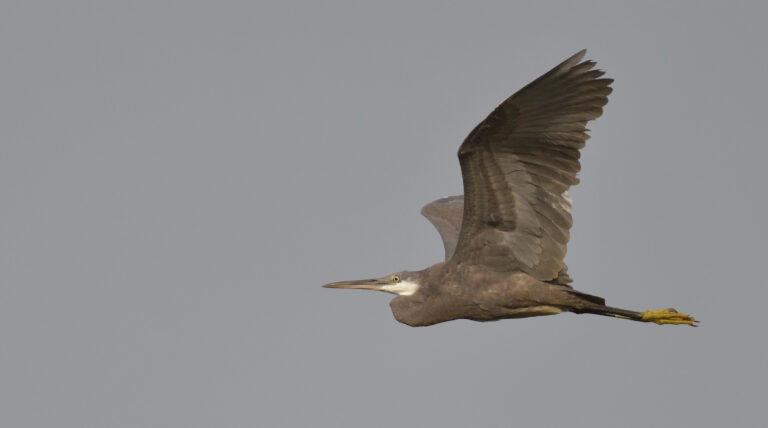
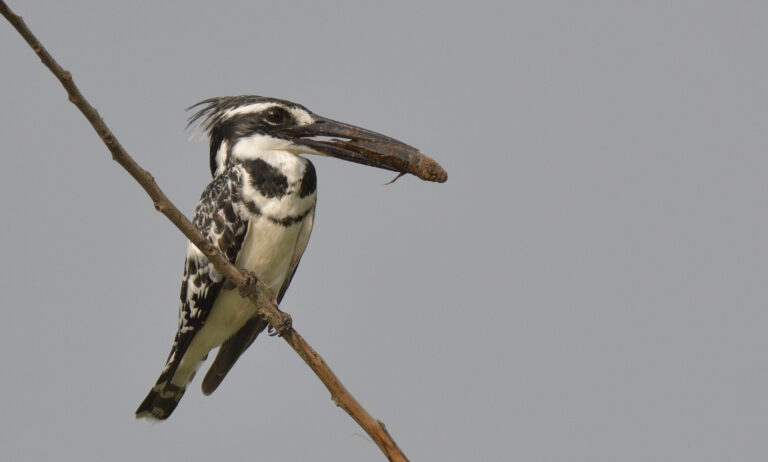
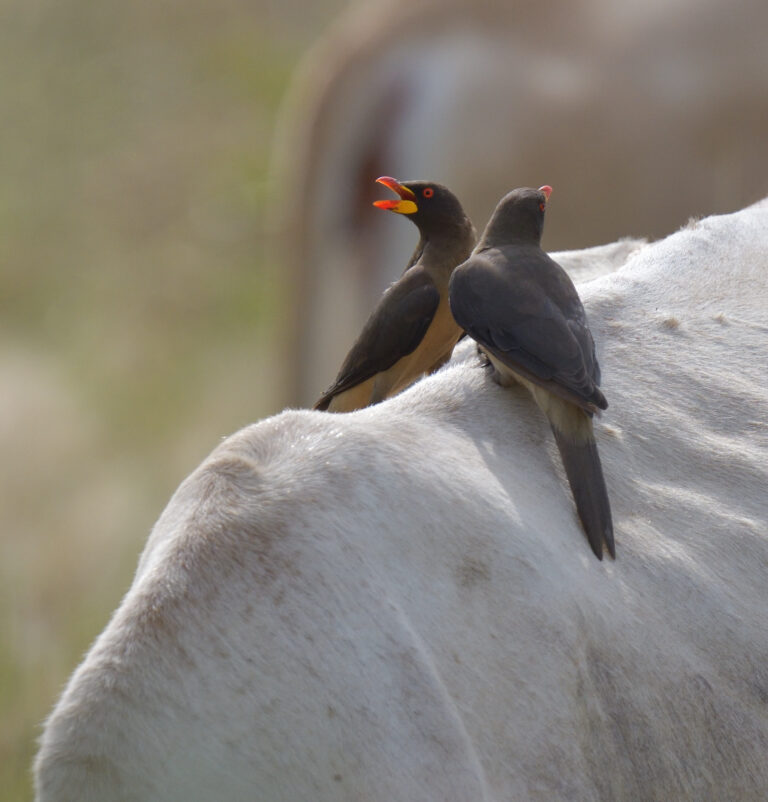
After a break for a cool drink at a very rudimentary beach bar, a walk along the beach produces a variety of shorebirds such as Western Reef Heron, Grey Plover, Oystercatcher, Whimbrel, Bar-tailed Godwit, Sanderling, Turnstone, Caspian, Royal, Sandwich and Common Terns, Grey-headed and Lesser Black-backed Gulls and the scarce White-fronted Plover which is another new bird for the trip.
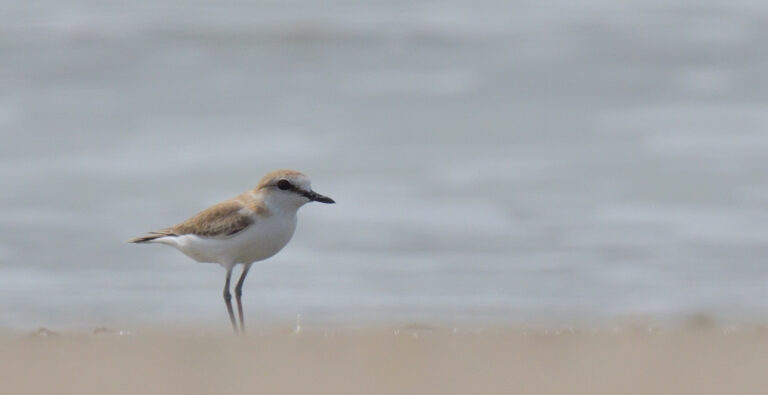
After an outdoor lunch at Sala Lodge in the nearby mangroves, we set off on a boat trip down the Halahen river which forms the border between The Gambia and Senegal. On the Senegal side we soon find a mixed group of roosting terns along with a few Slender-billed Gulls. Also on the Senegal side, we spot the mighty Goliath Heron, while several Ospreys circle overhead while searching for fish, and near the mouth of the river we also see three Little Terns, making five different terns today!
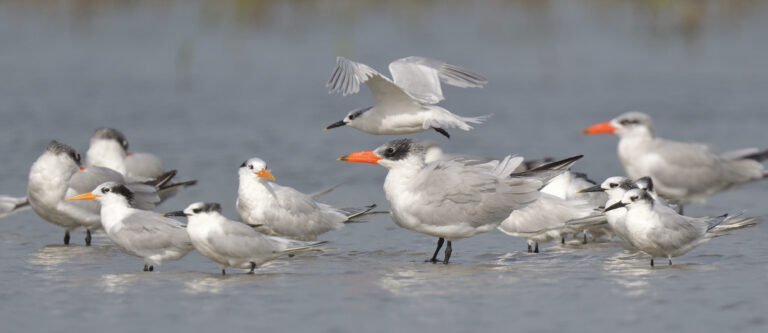
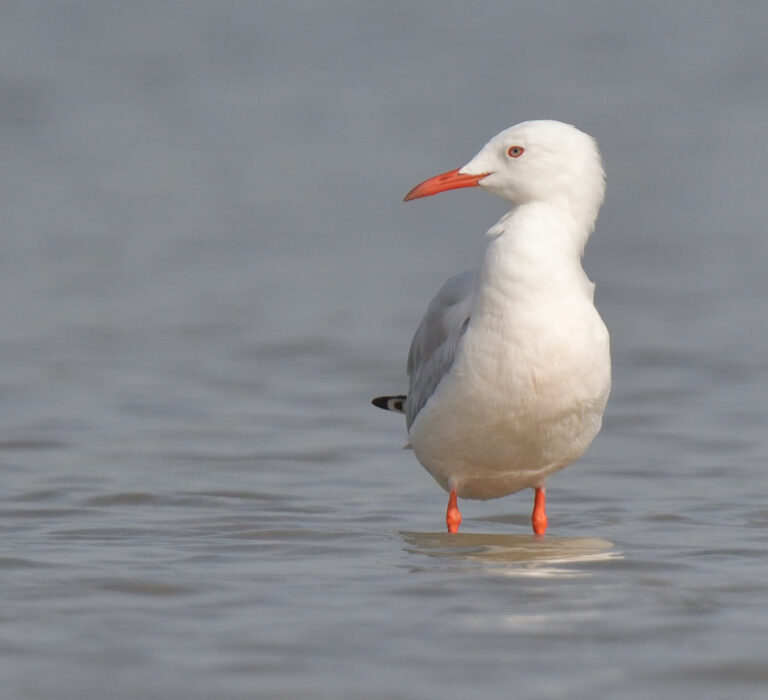
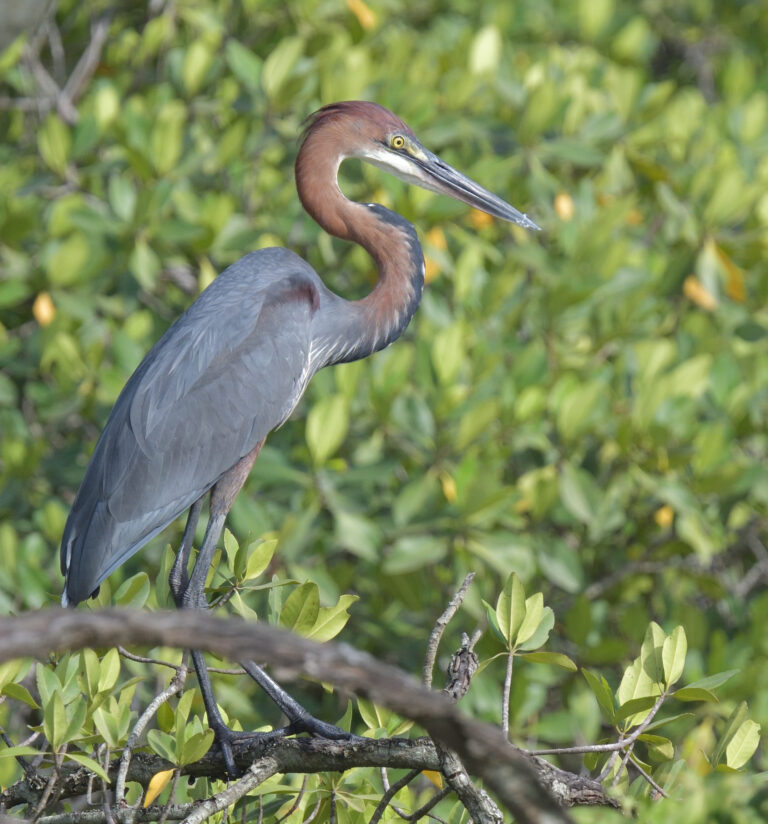
Returning to the chaotically busy fishing town of Tanji, we make a brief late afternoon visit to the nearby Tanji Bird Reserve where we find several Four-banded Sandgrouse and Yellow-crowned Gonoleks as well as Red-billed and African Grey Hornbills, a pair of Vieillot’s Barbets, Yellow-fronted Tinkerbird, Splendid Sunbird, Northern Black Flycatcher and Pied-winged Swallow, which is another new bird for the trip, in a total of 93 different birds seen today!
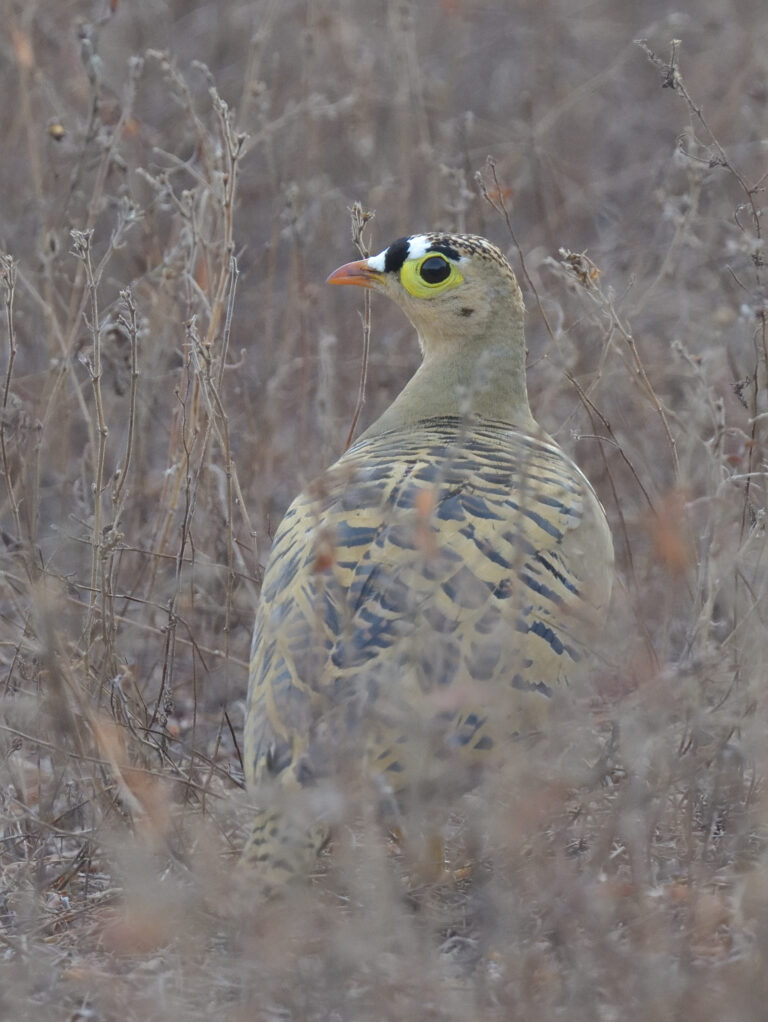
It’s our last day and we spend the morning in the Kotu Creek area, not far from the coast, where a stroll along a cycle track beside a mix of palm trees, scrub and wet meadows produces a far wider variety of bird sightings than anything possible along a similar length of track in Britain. This variety includes exotic birds like Hooded Vulture, African Darter and Jacana, Senegal Parrot and Coucal, Green Woodhoopoe, Striped and Woodland Kingfishers, Blue-bellied and Broad-billed Rollers, Red-billed Hornbill, Lesser Honeyguide, Fork-tailed Drongo, Brown Babbler, Red-bellied Paradise Flycatcher, Beautiful Sunbird, Yellow-billed Shrike, Greater Blue-eared Starling, Bronze Mannikin and White-billed Buffalo Weaver which is new for the trip.
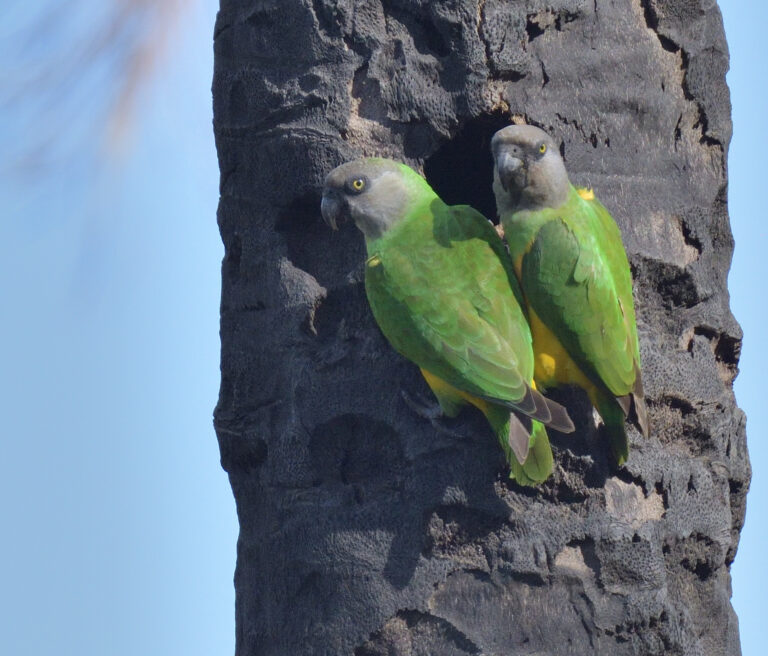
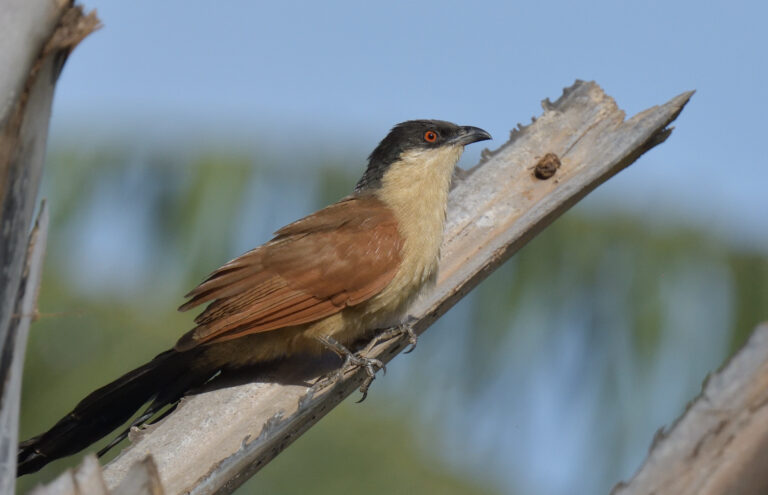
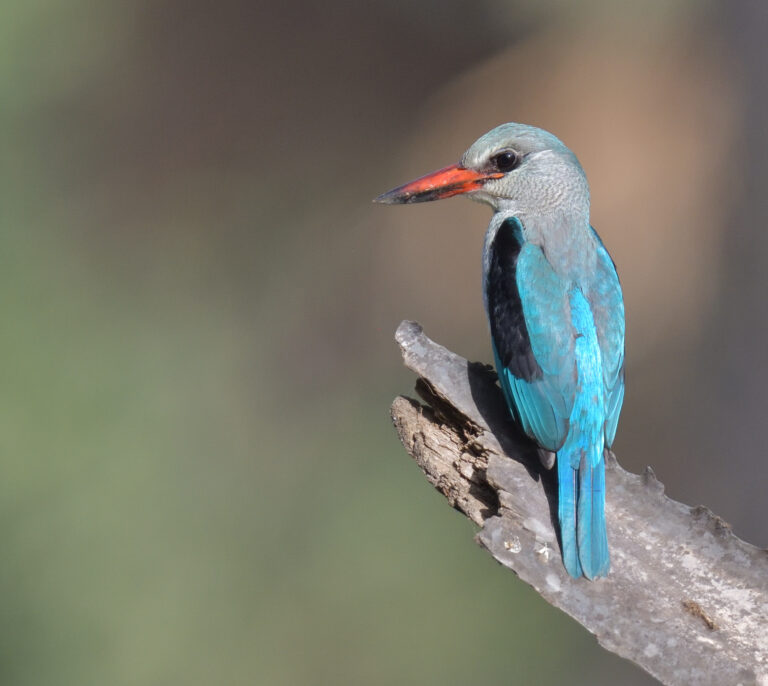
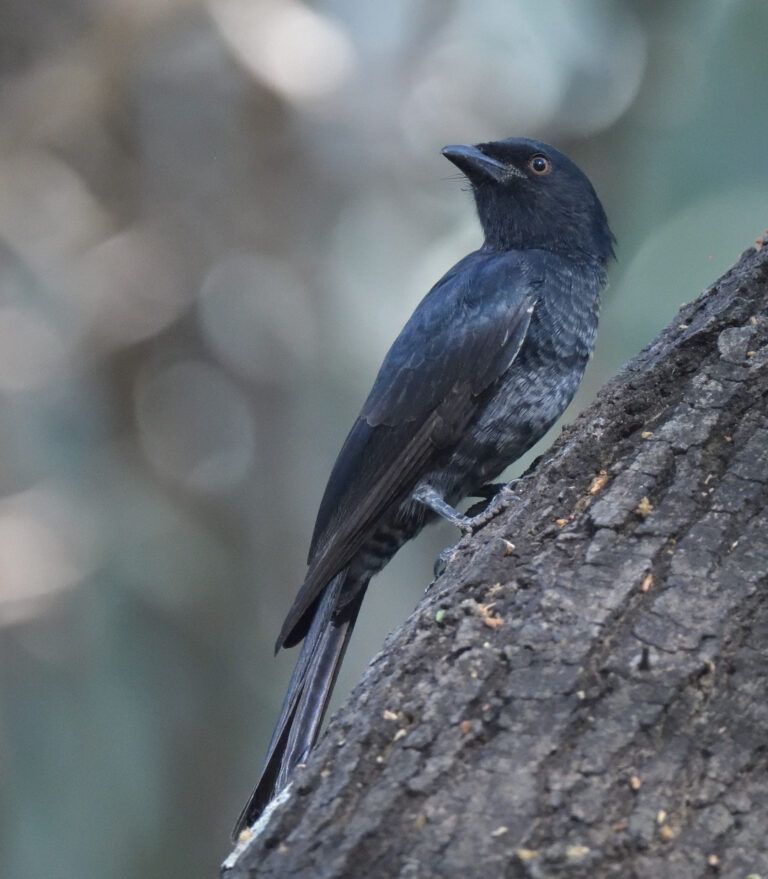
Next, we move to the nearby bridge over the Kotu Creek, where a stake out of a tiny pool produces intimate views of White-crowned Robin Chat, Black-necked Weaver, Red-cheeked Cordon Bleu, Red-billed Firefinch, Bronze Mannikin and best of all, the usually secretive Oriole Warbler.
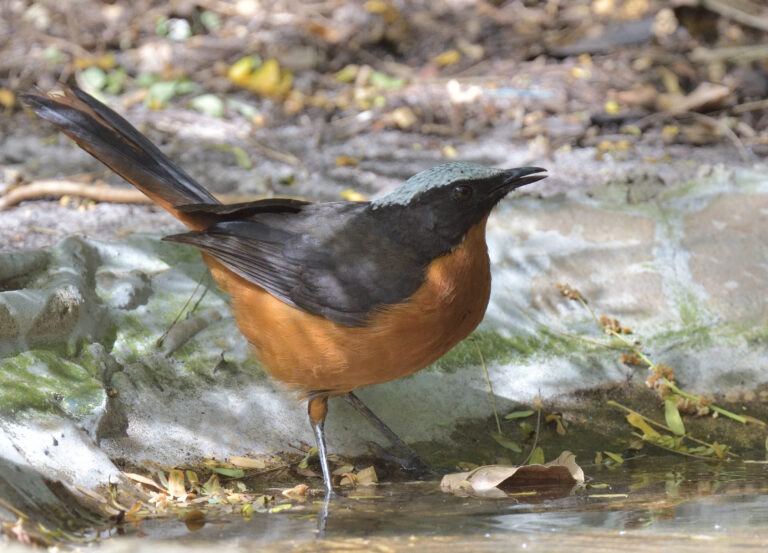
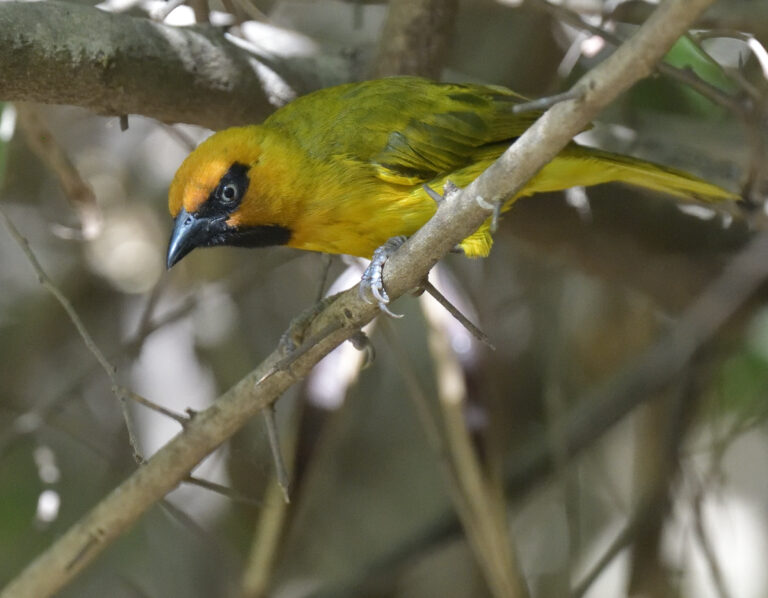
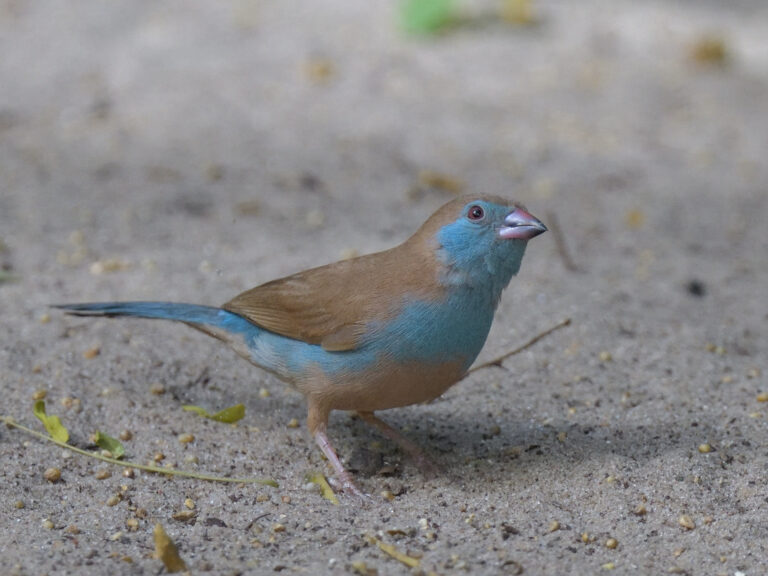
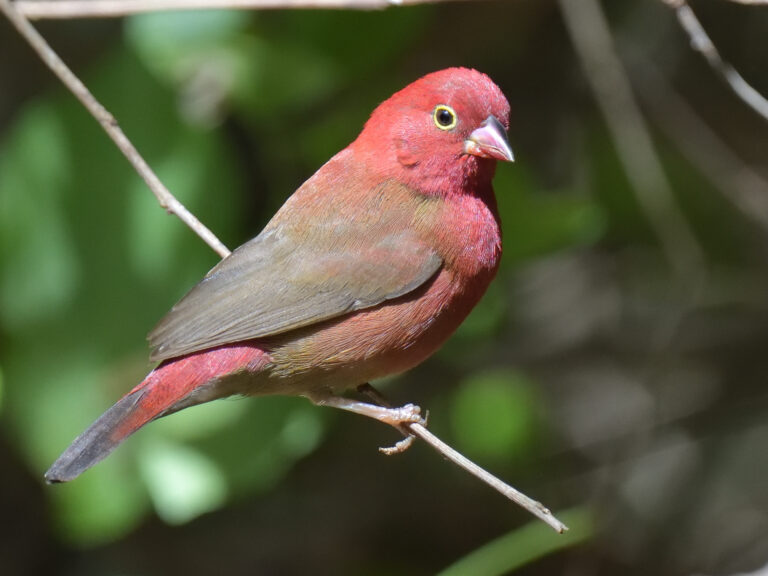
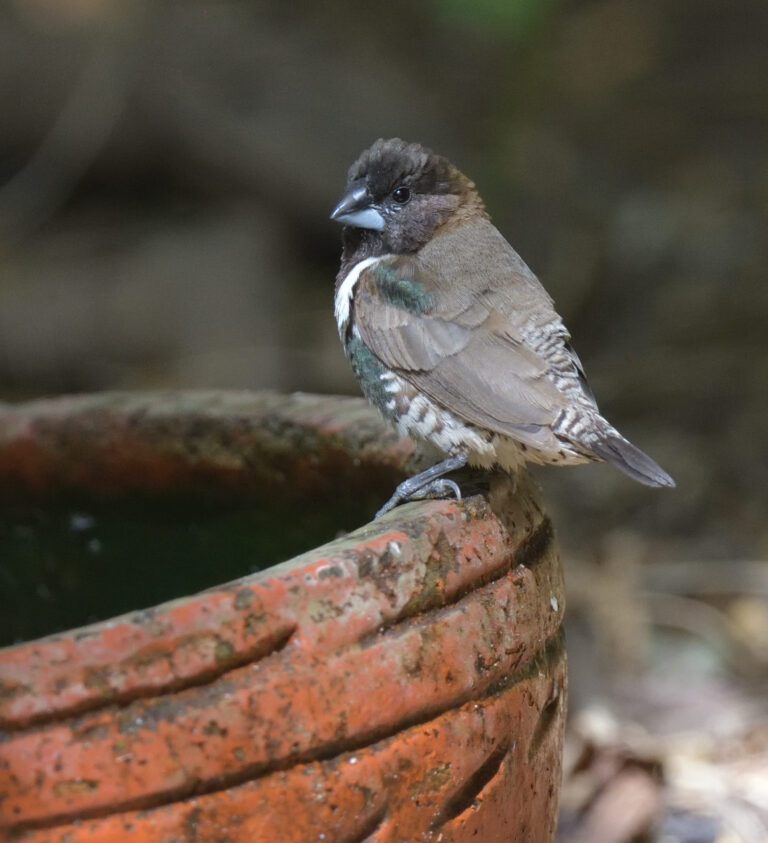
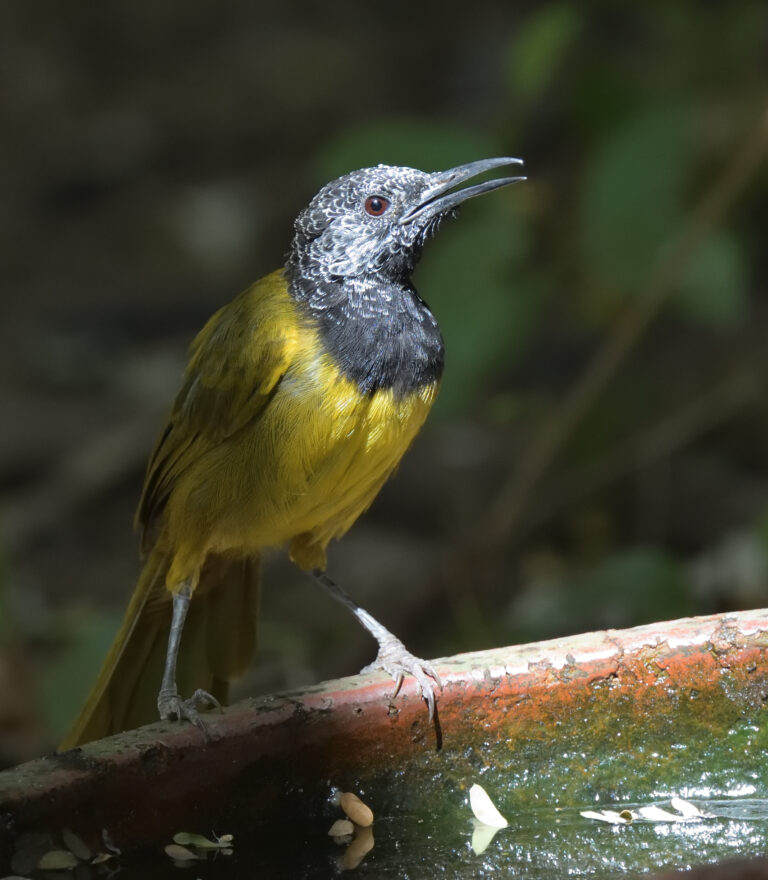
After lunch in a local restaurant, offering a range of options other than chicken and chips, we finish up at the Tanji Ecolodge, where a small pool attracts birds like Blue-spotted Wood Dove, African Pygmy Kingfisher, African Thrush, African Paradise Flycatcher, Common Bulbul and the uncommon Western Bluebill, our last new bird of the trip. By now we had seen 16 different mammals and a total of 253 different birds including 24 types of wader and 24 raptors, 14 different herons and egrets, 11 pigeons and doves, all 8 possible bee-eaters, 8 kingfishers, 6 terns, 4 owls and 4 different rollers!
